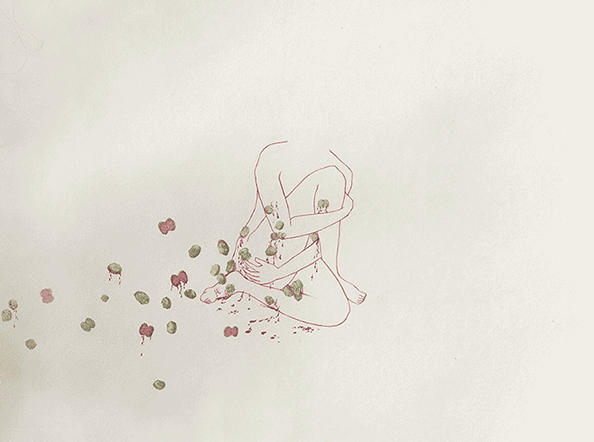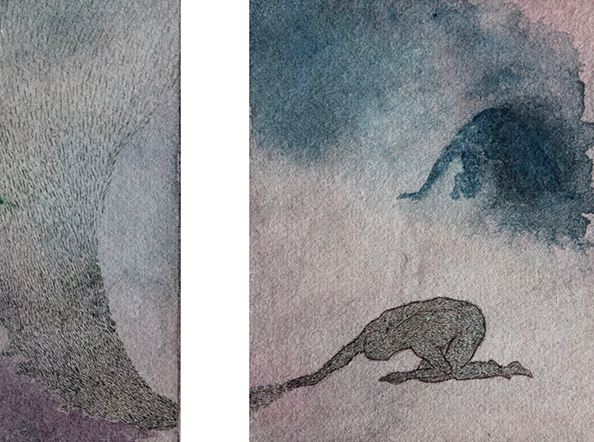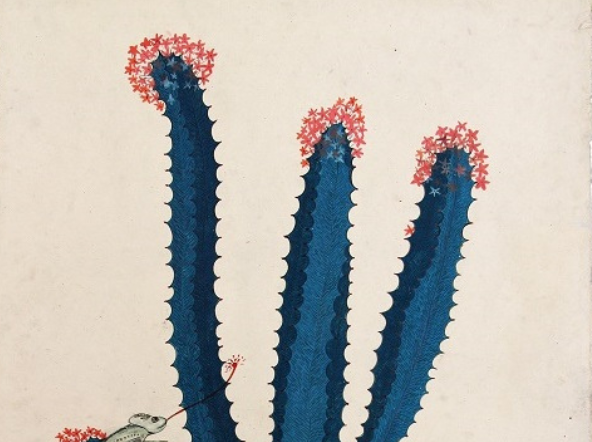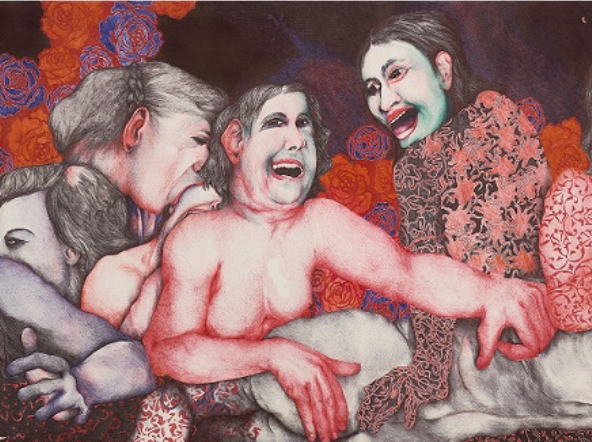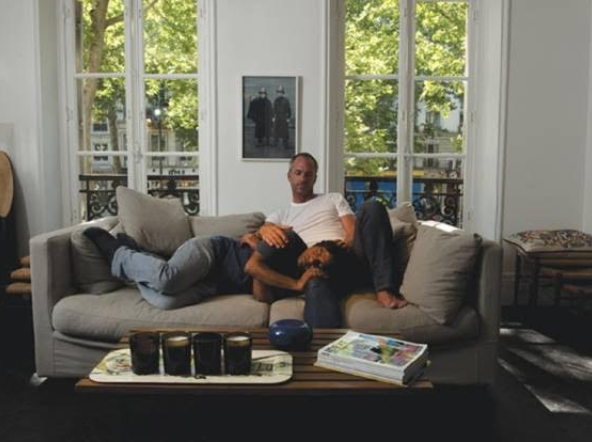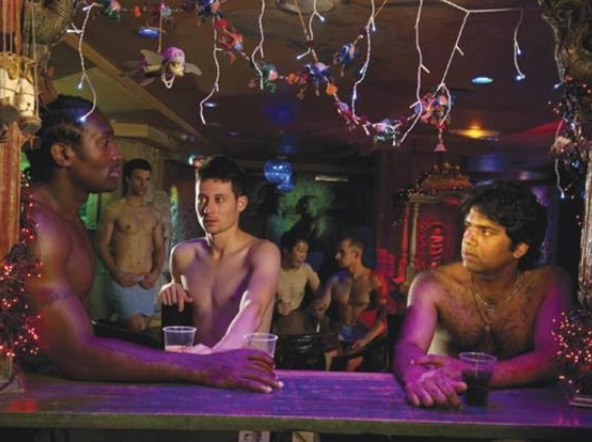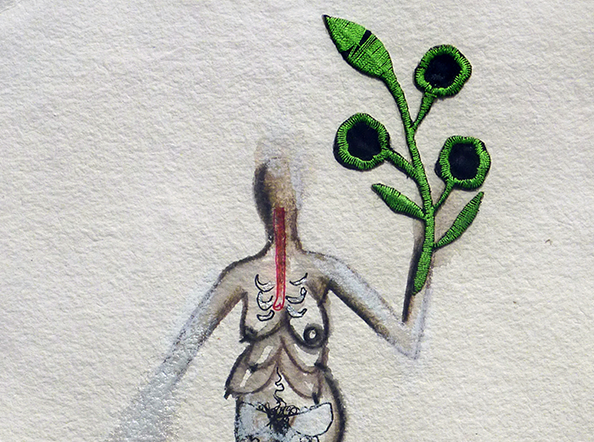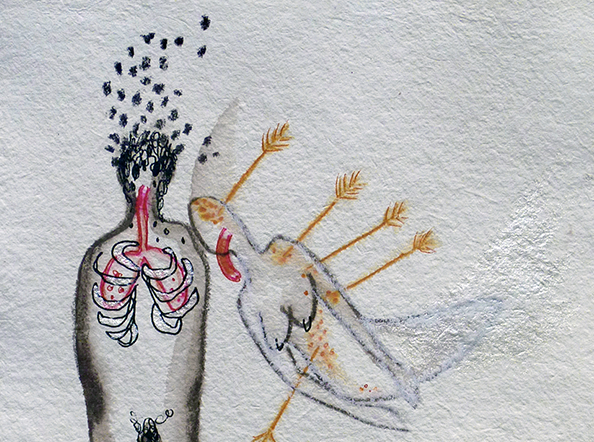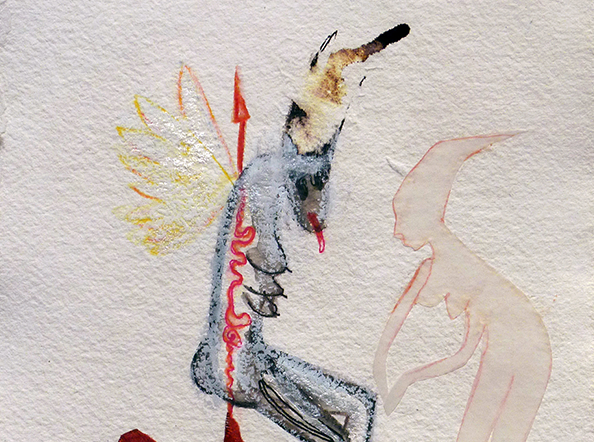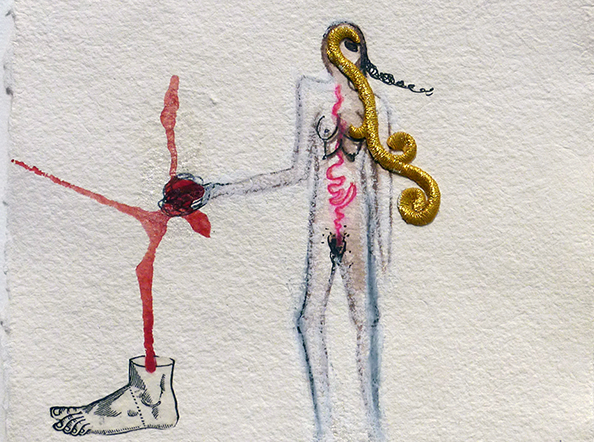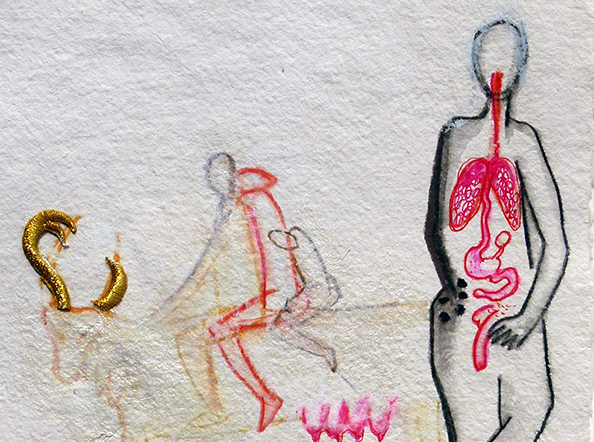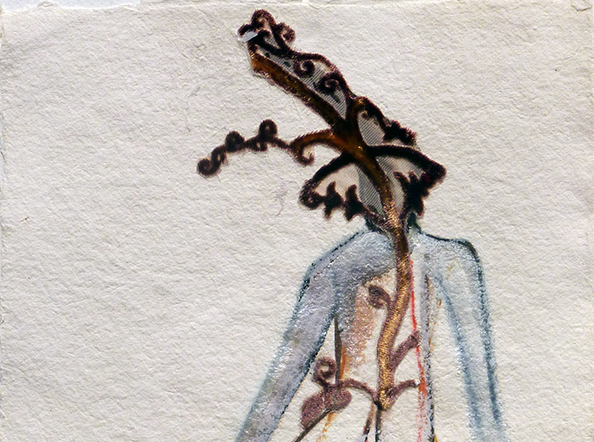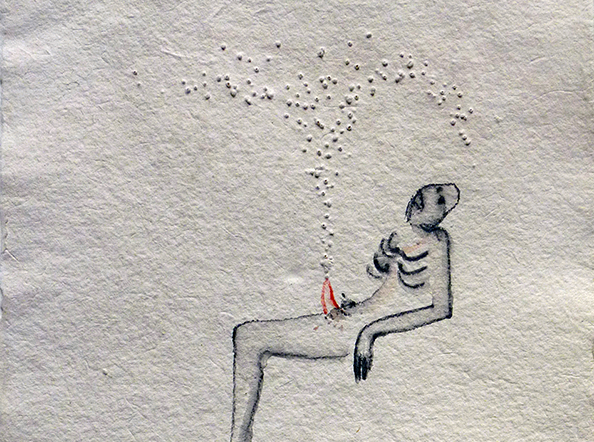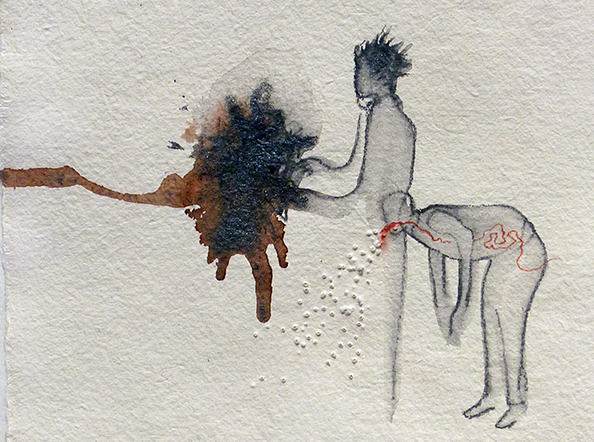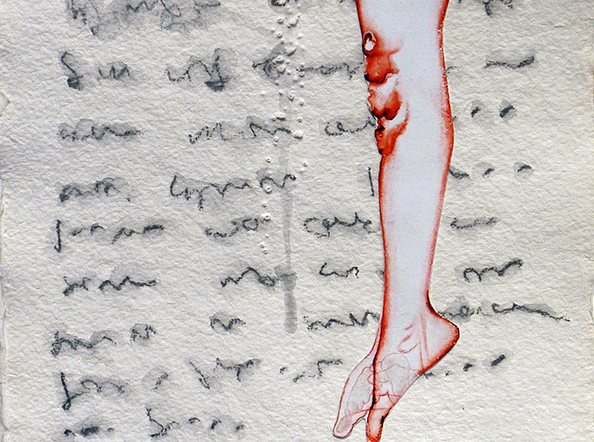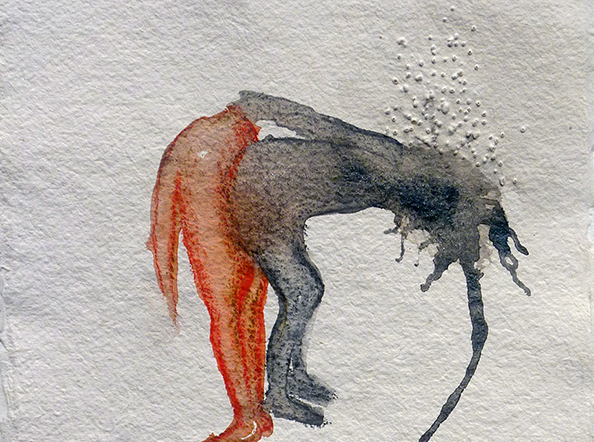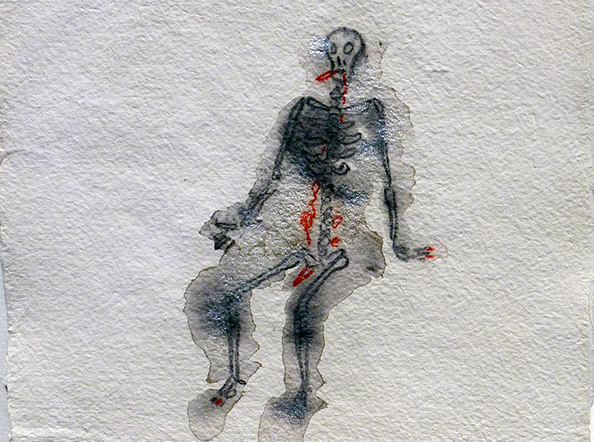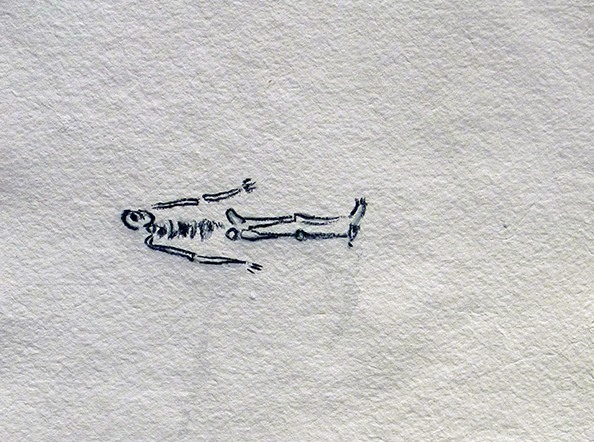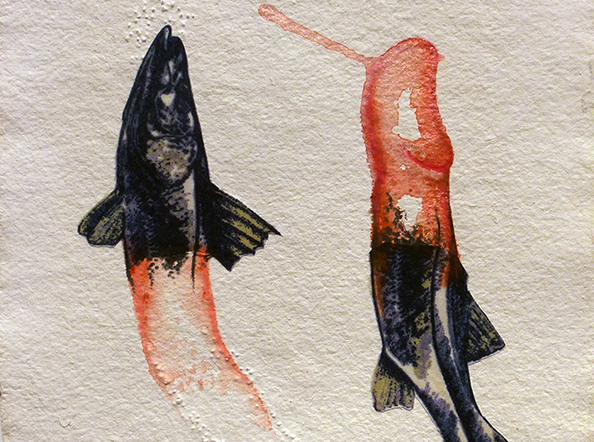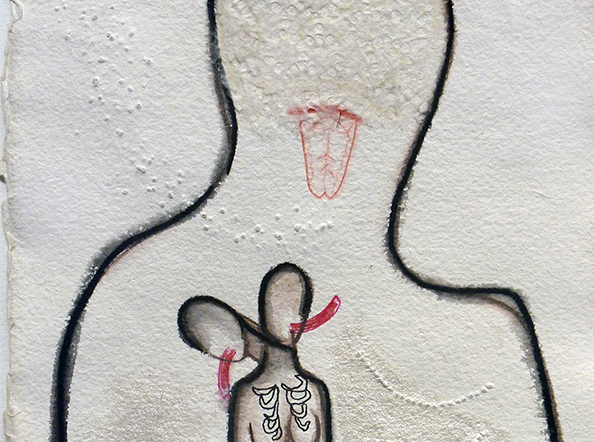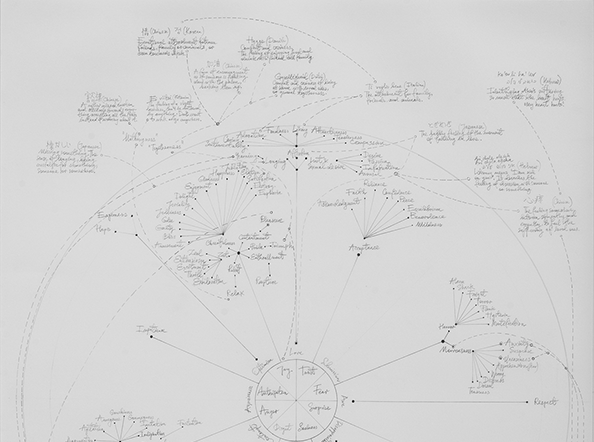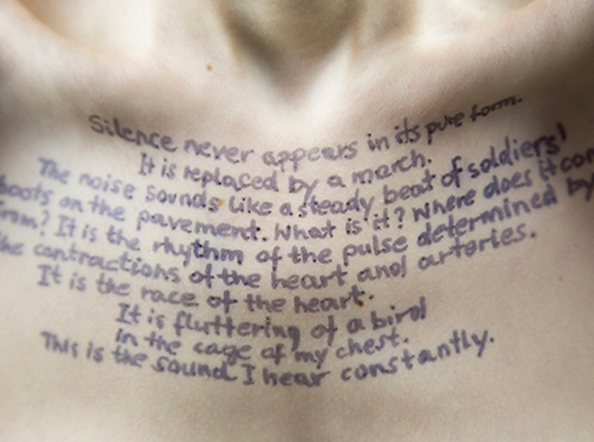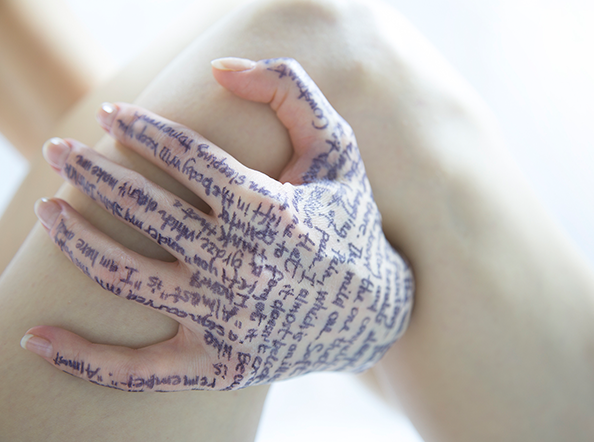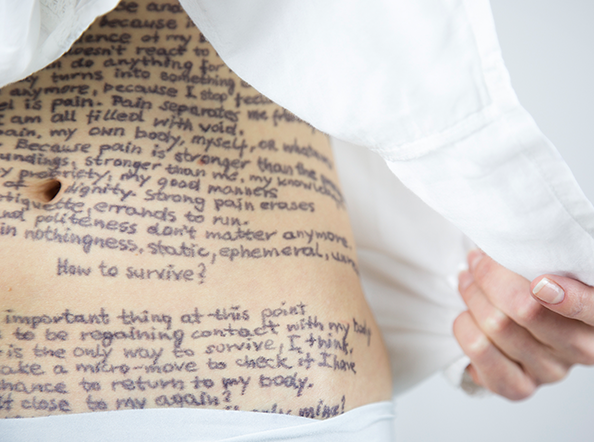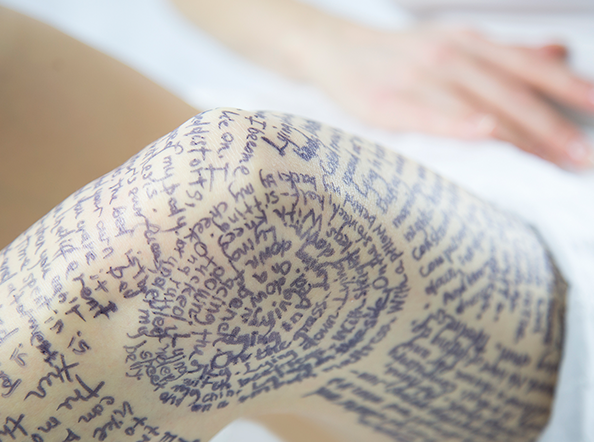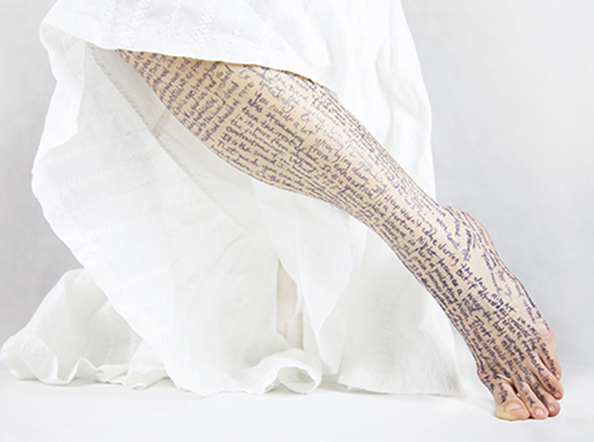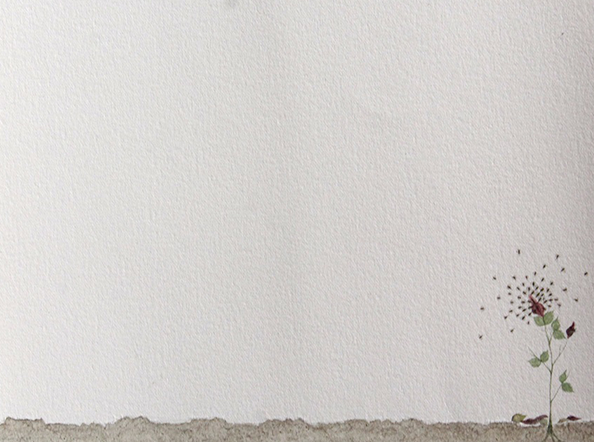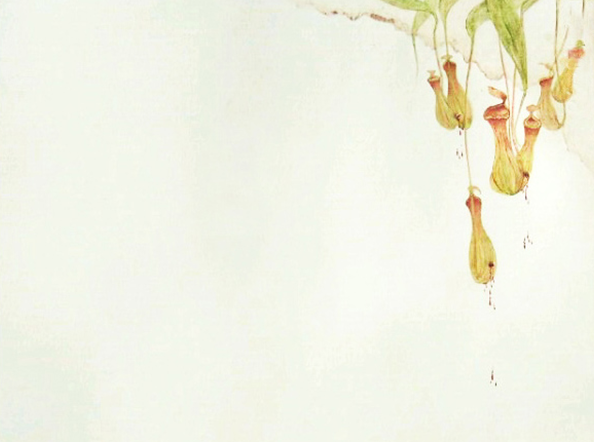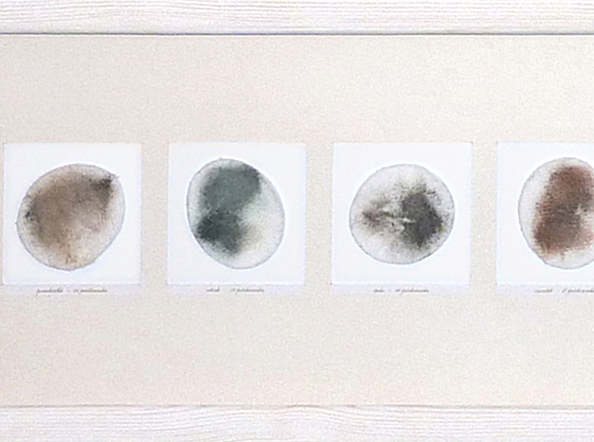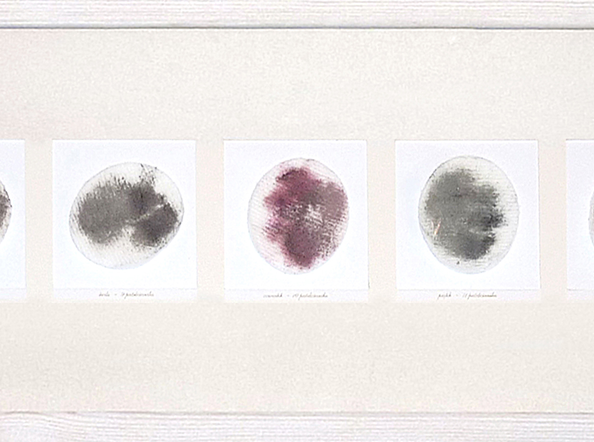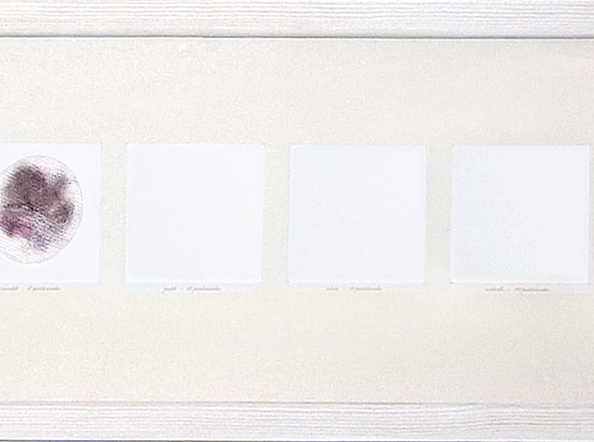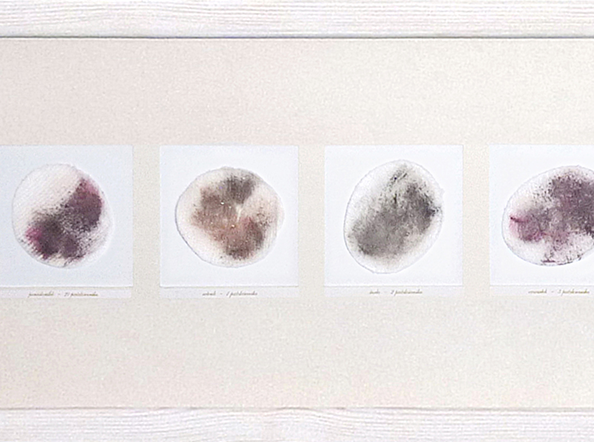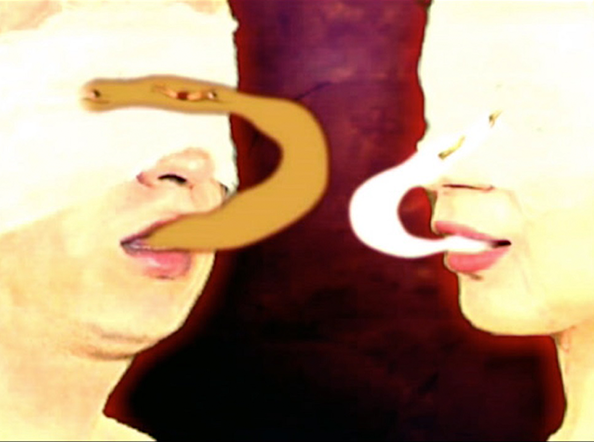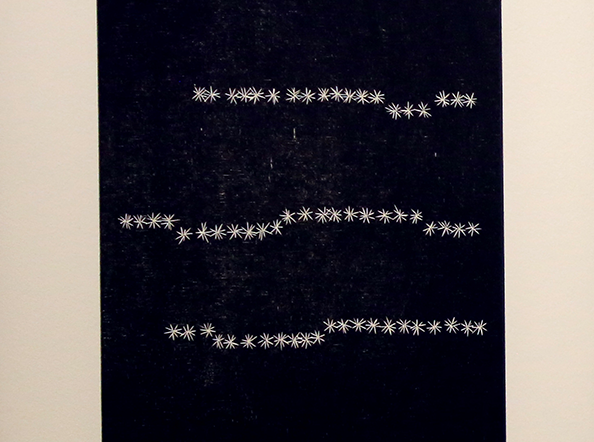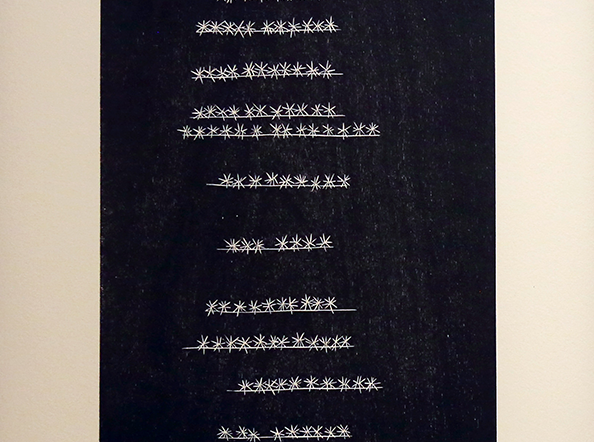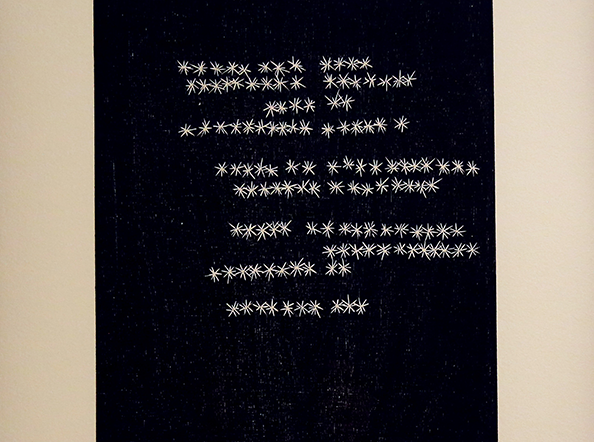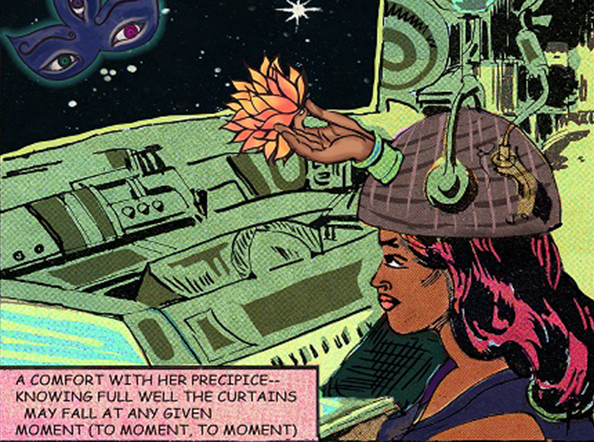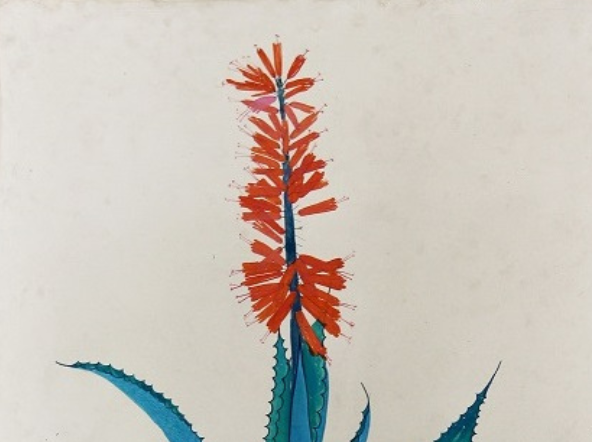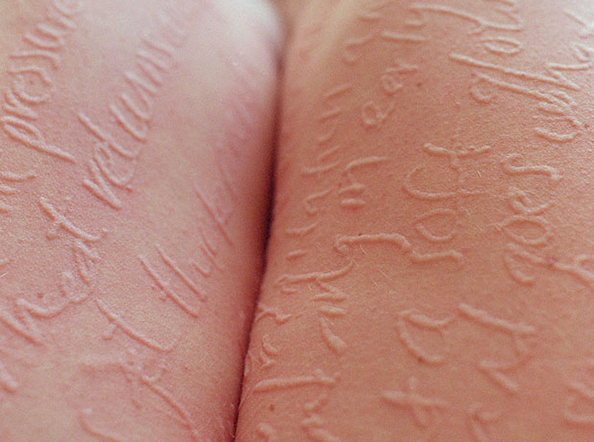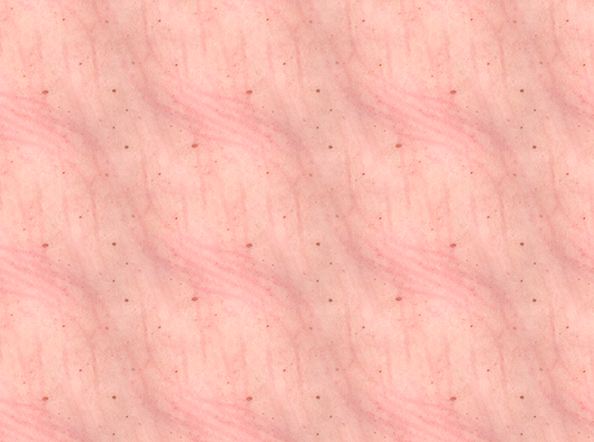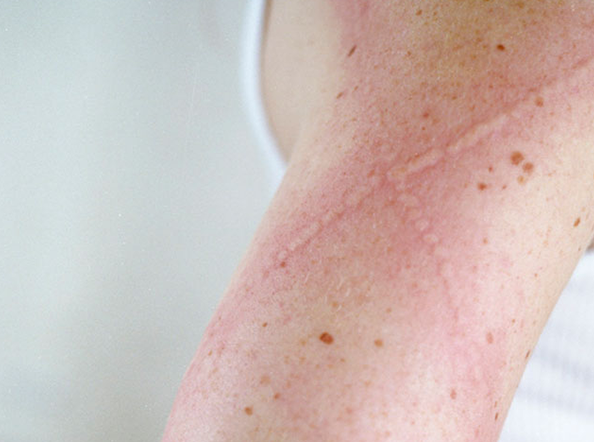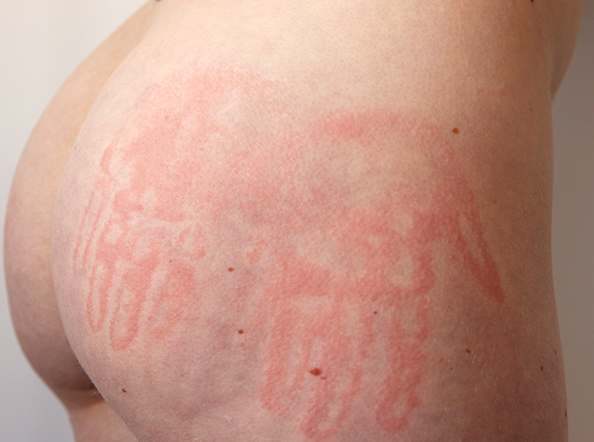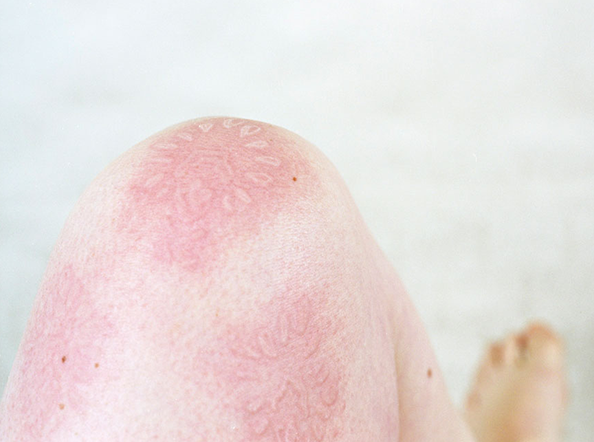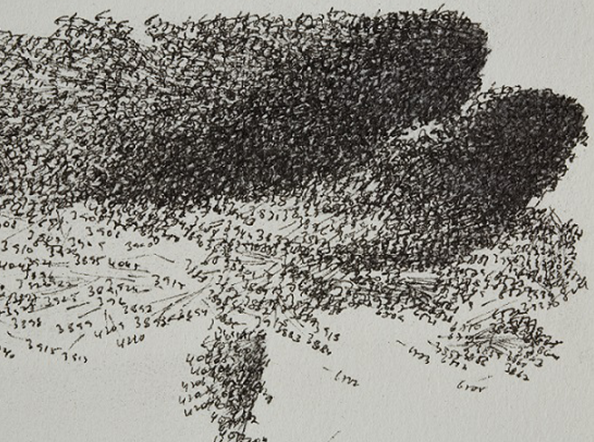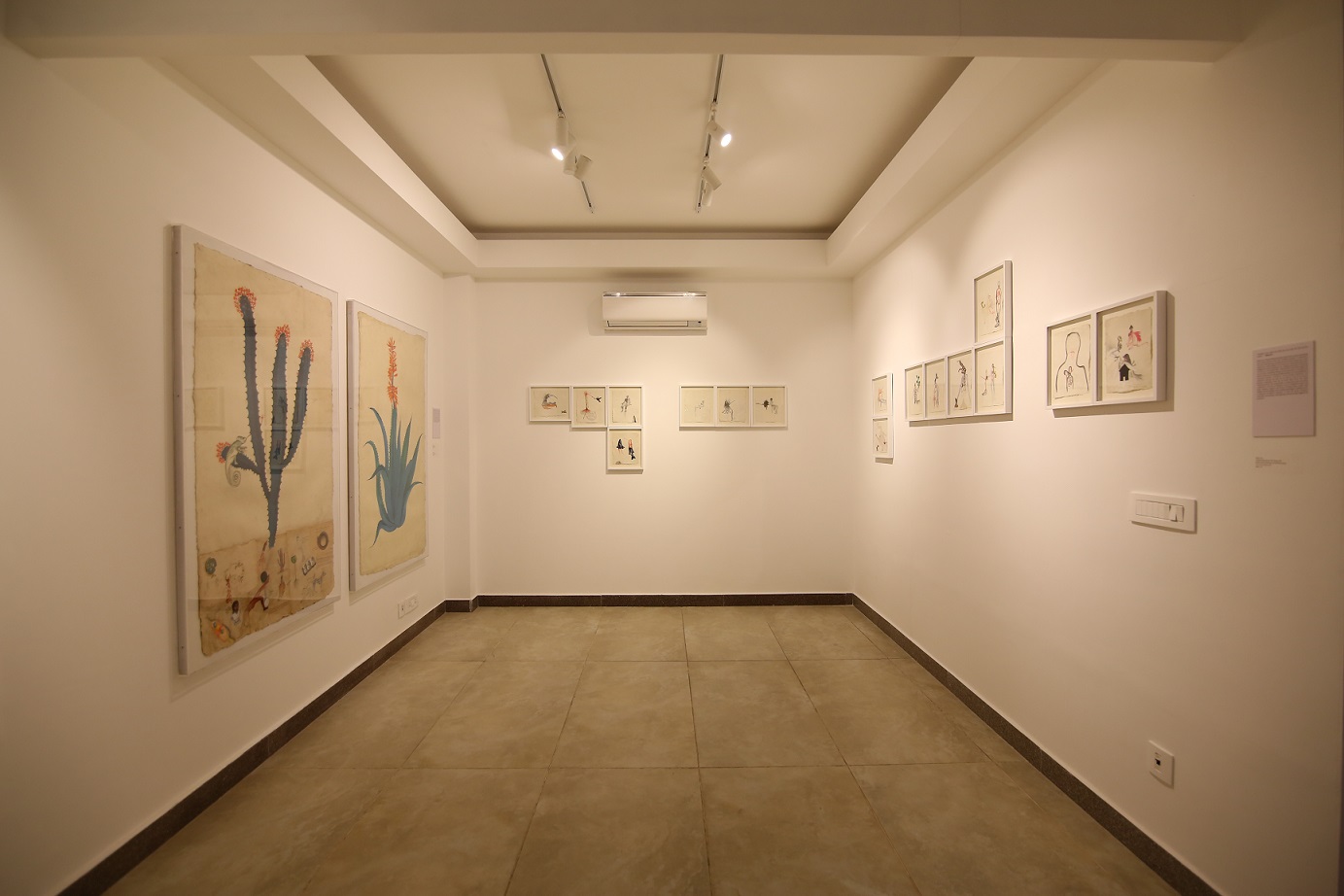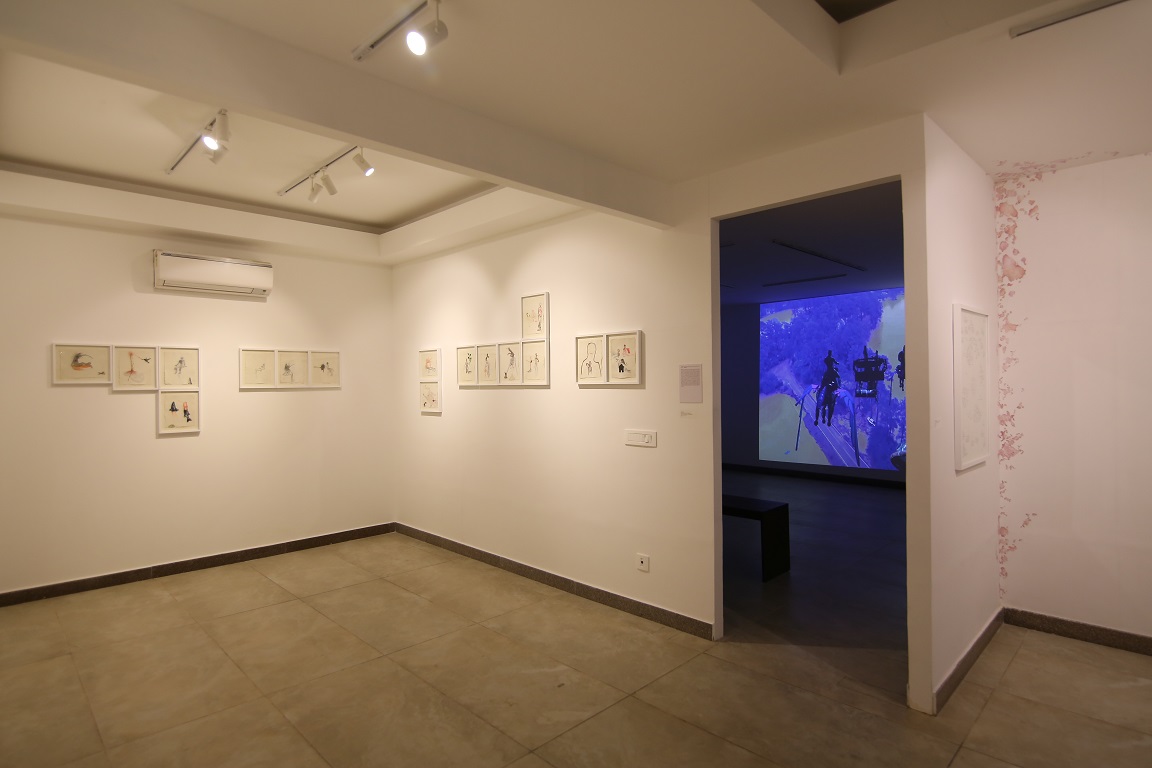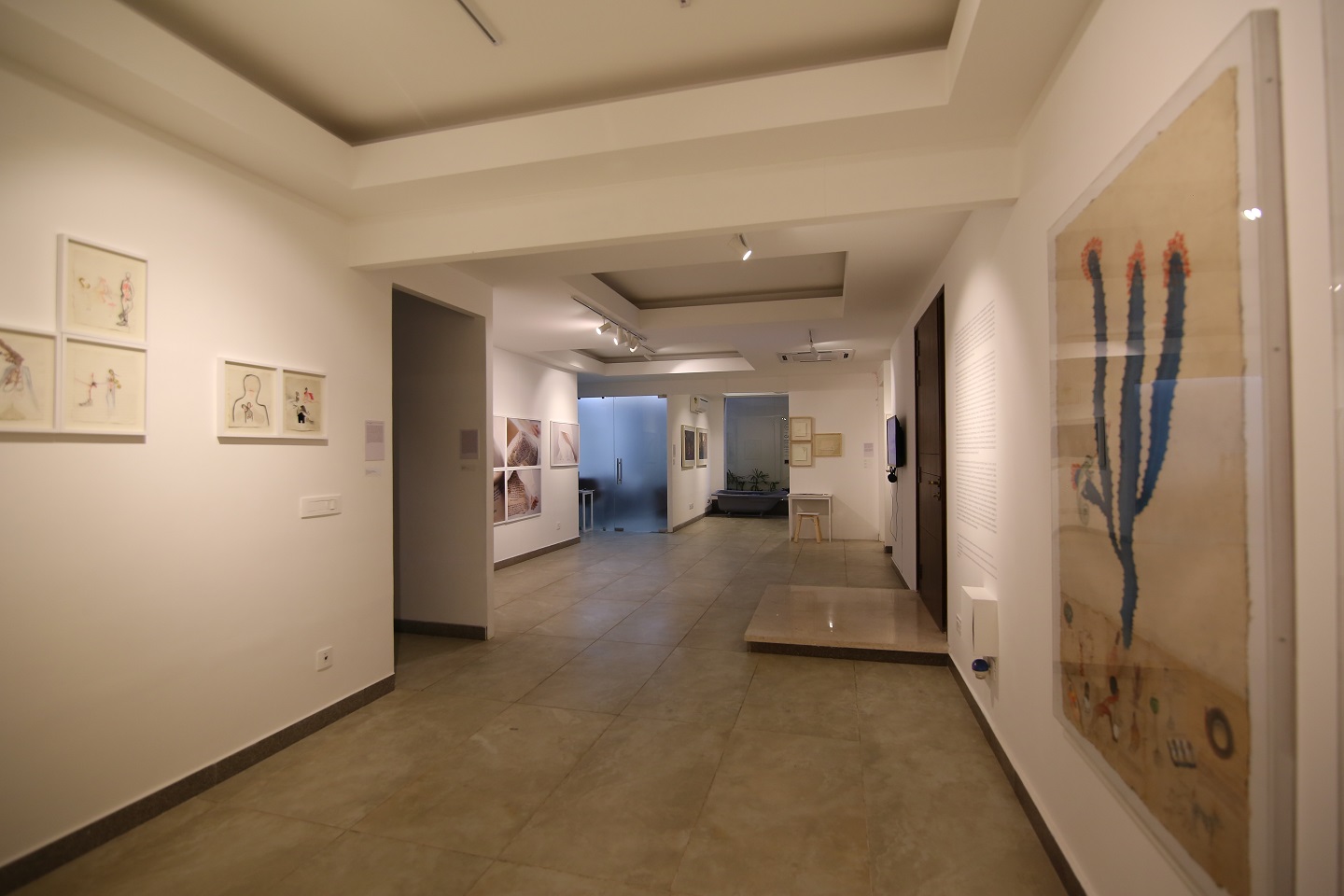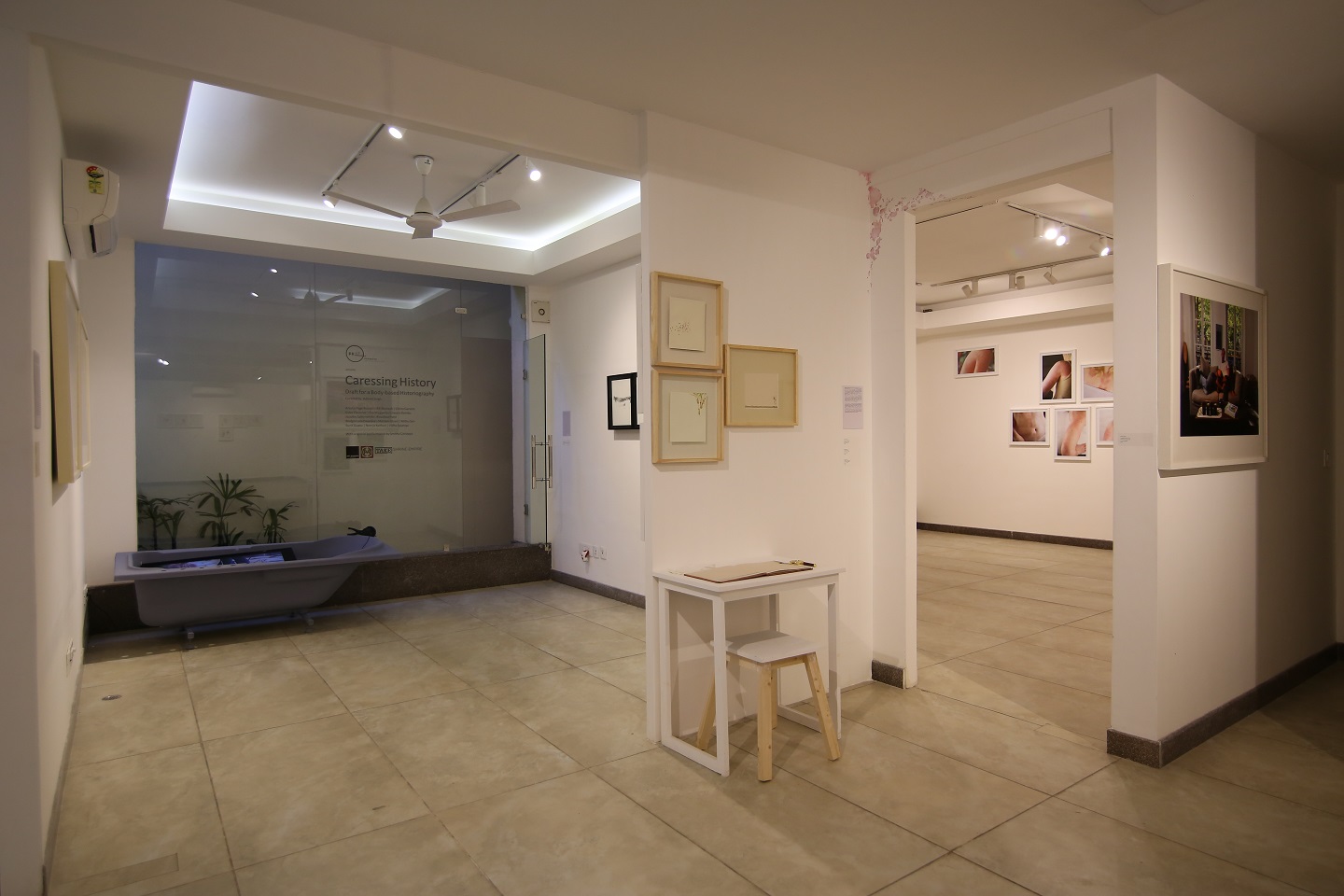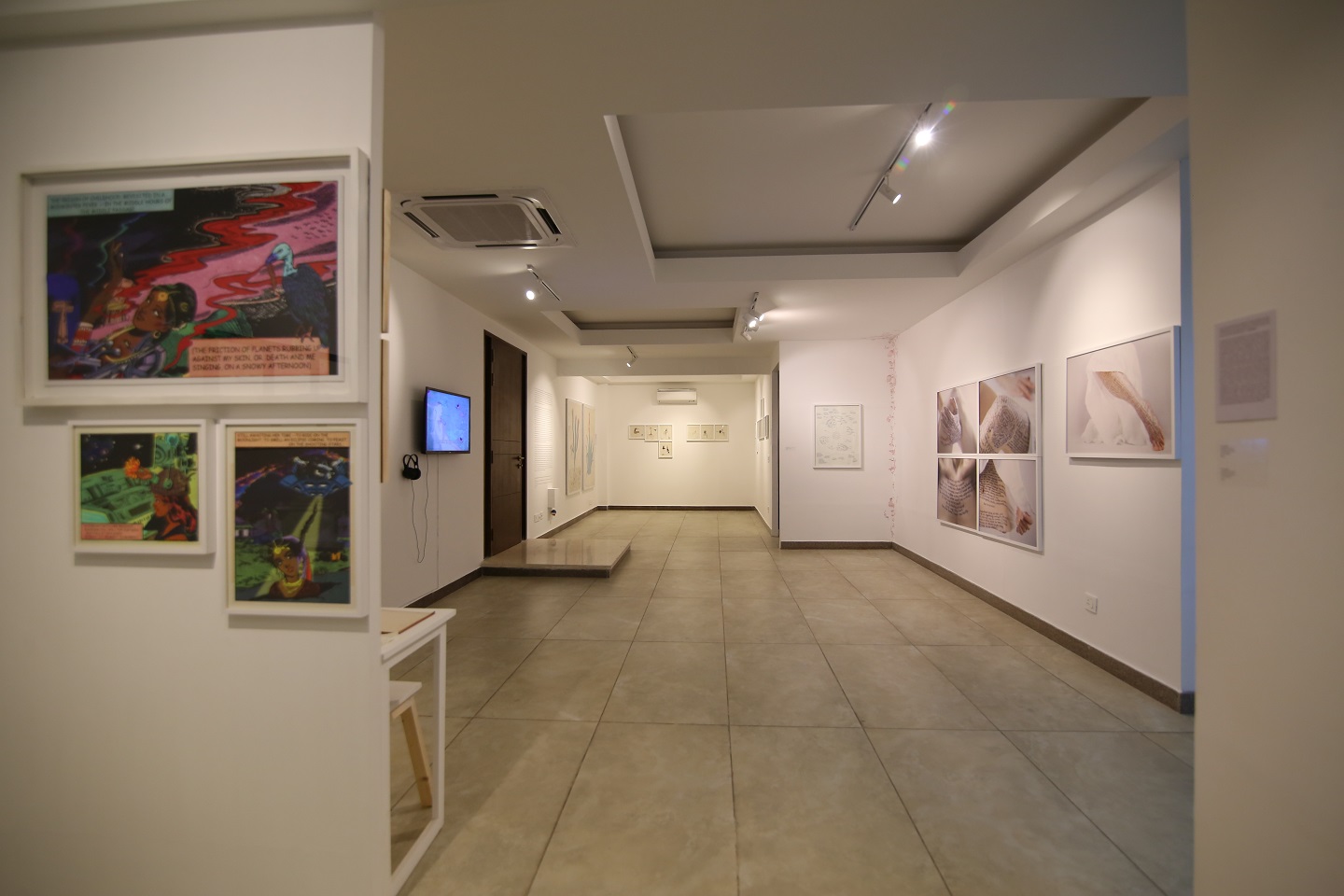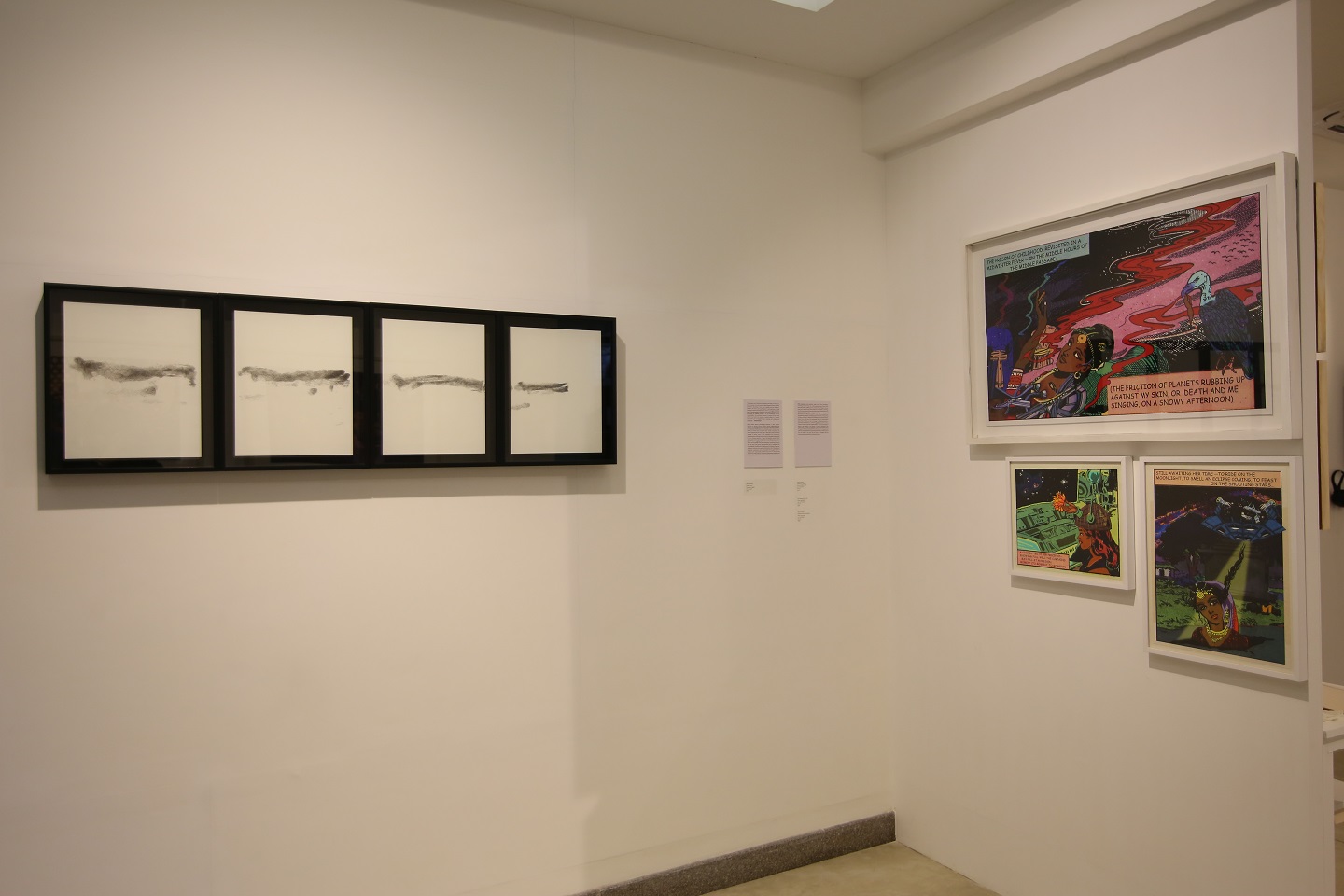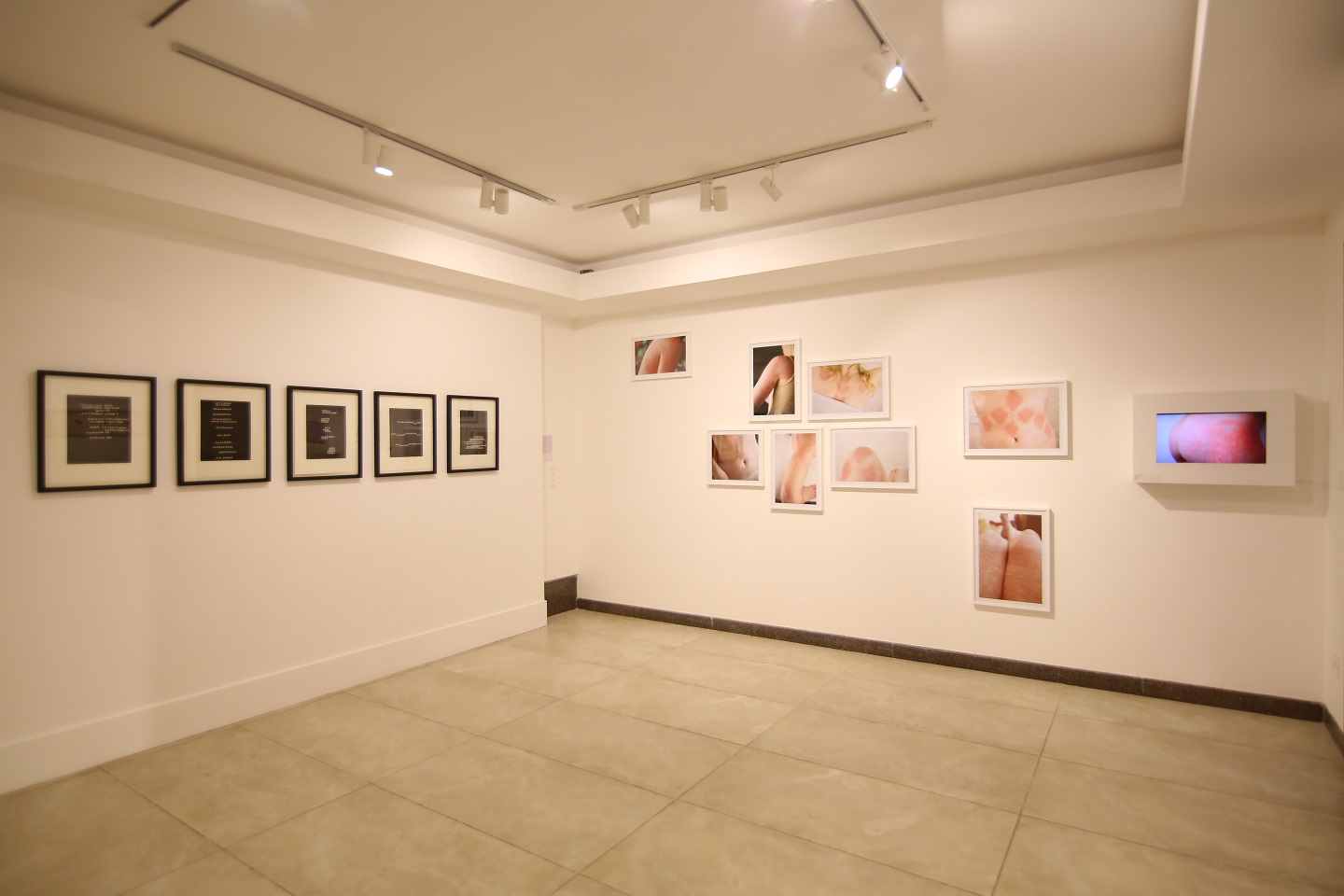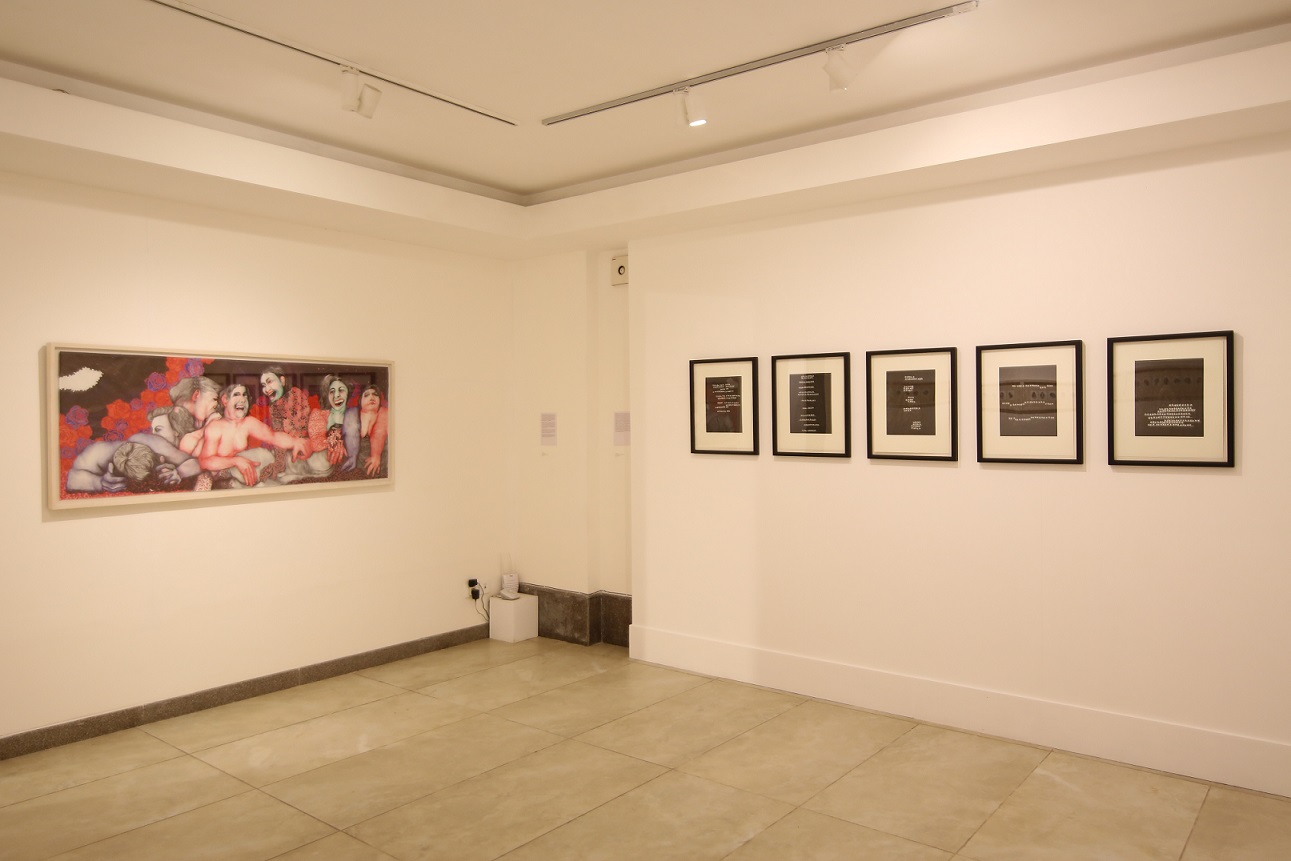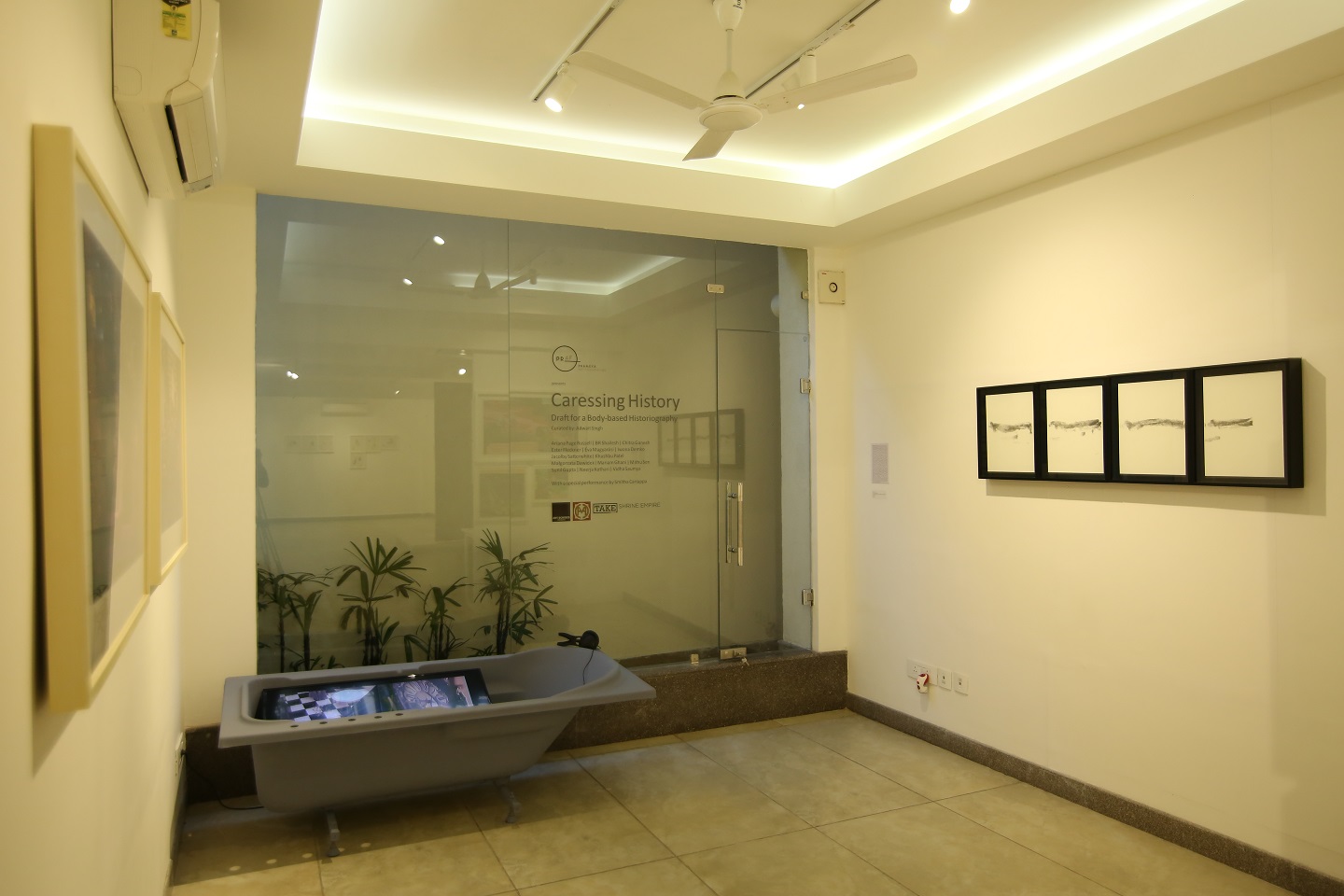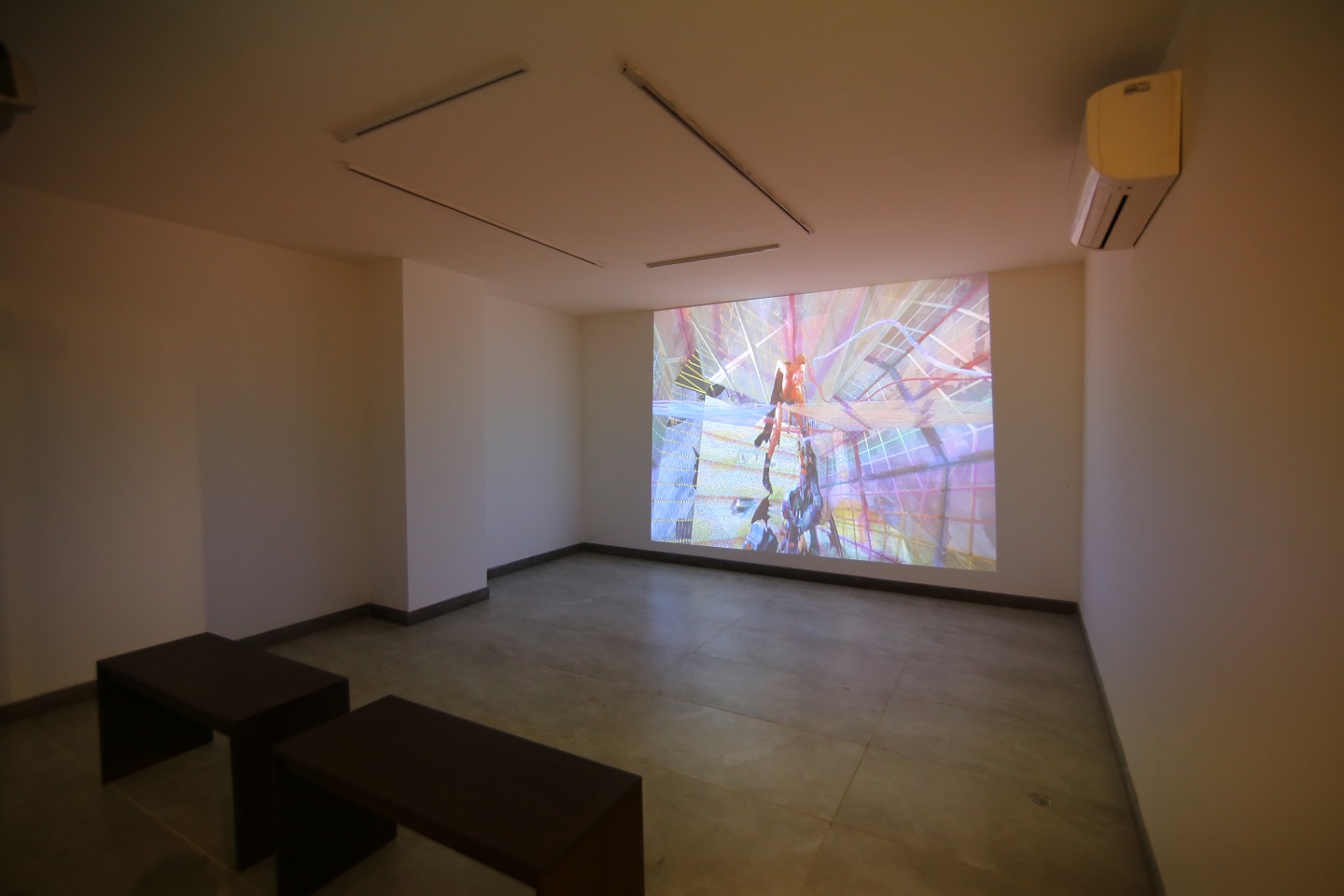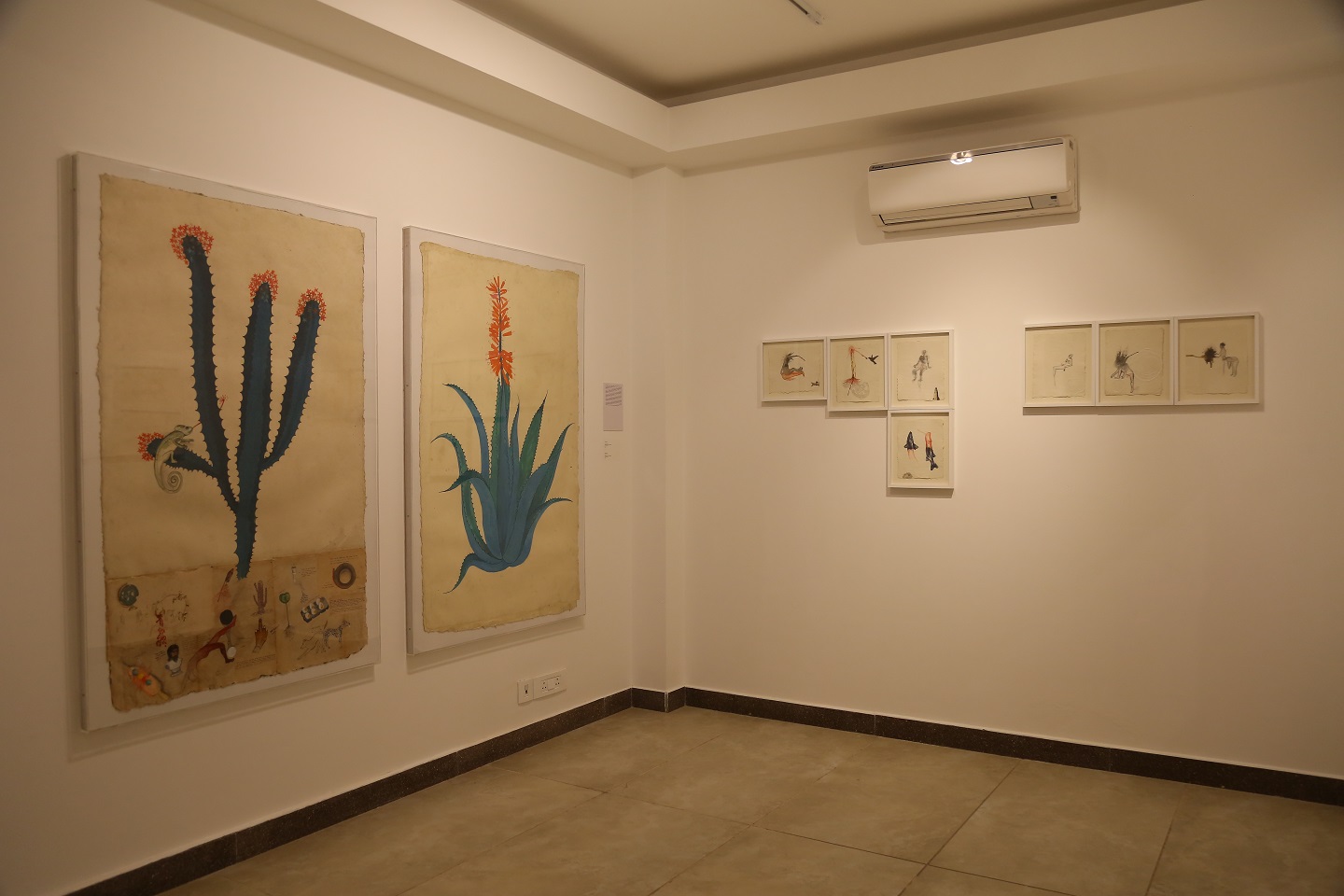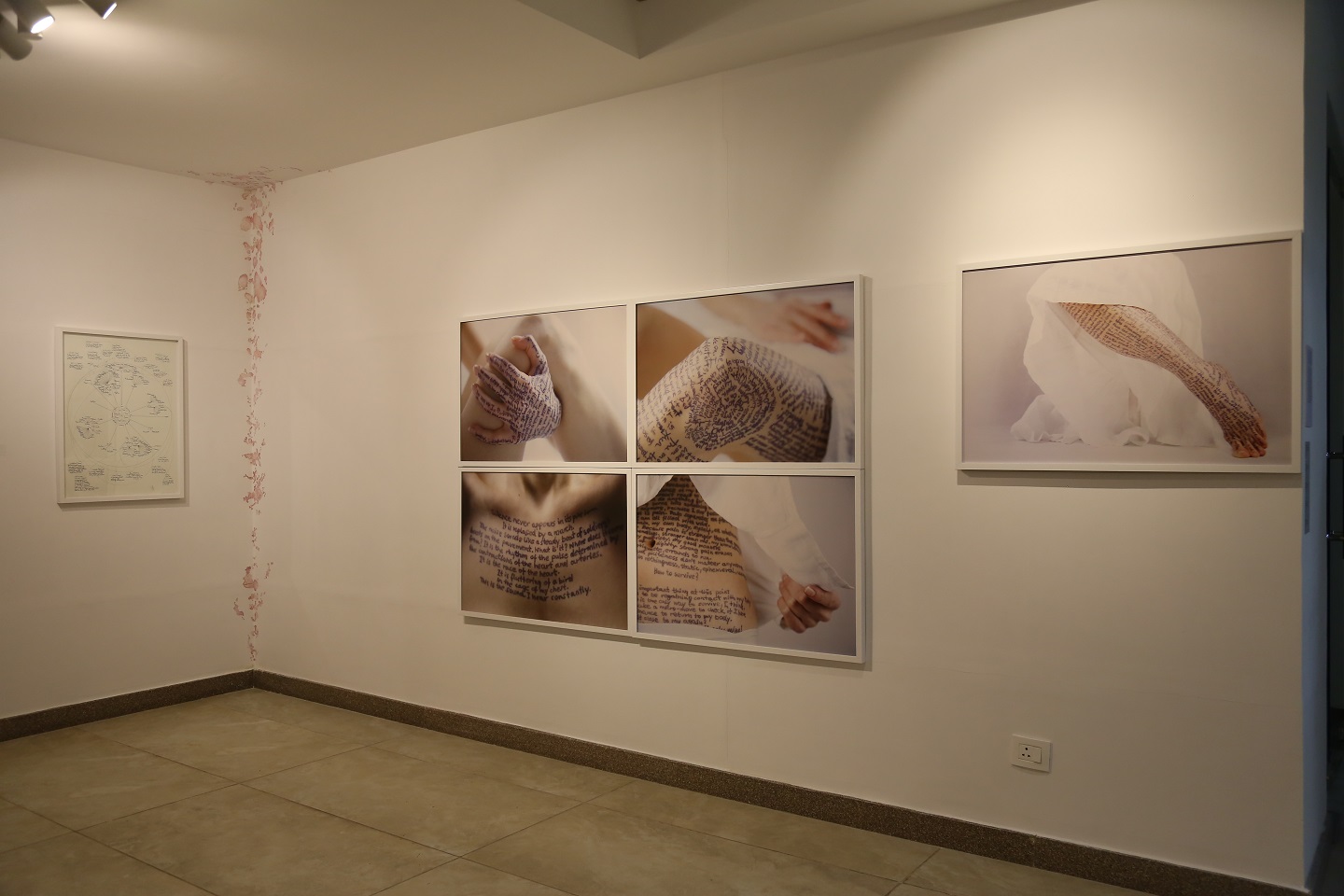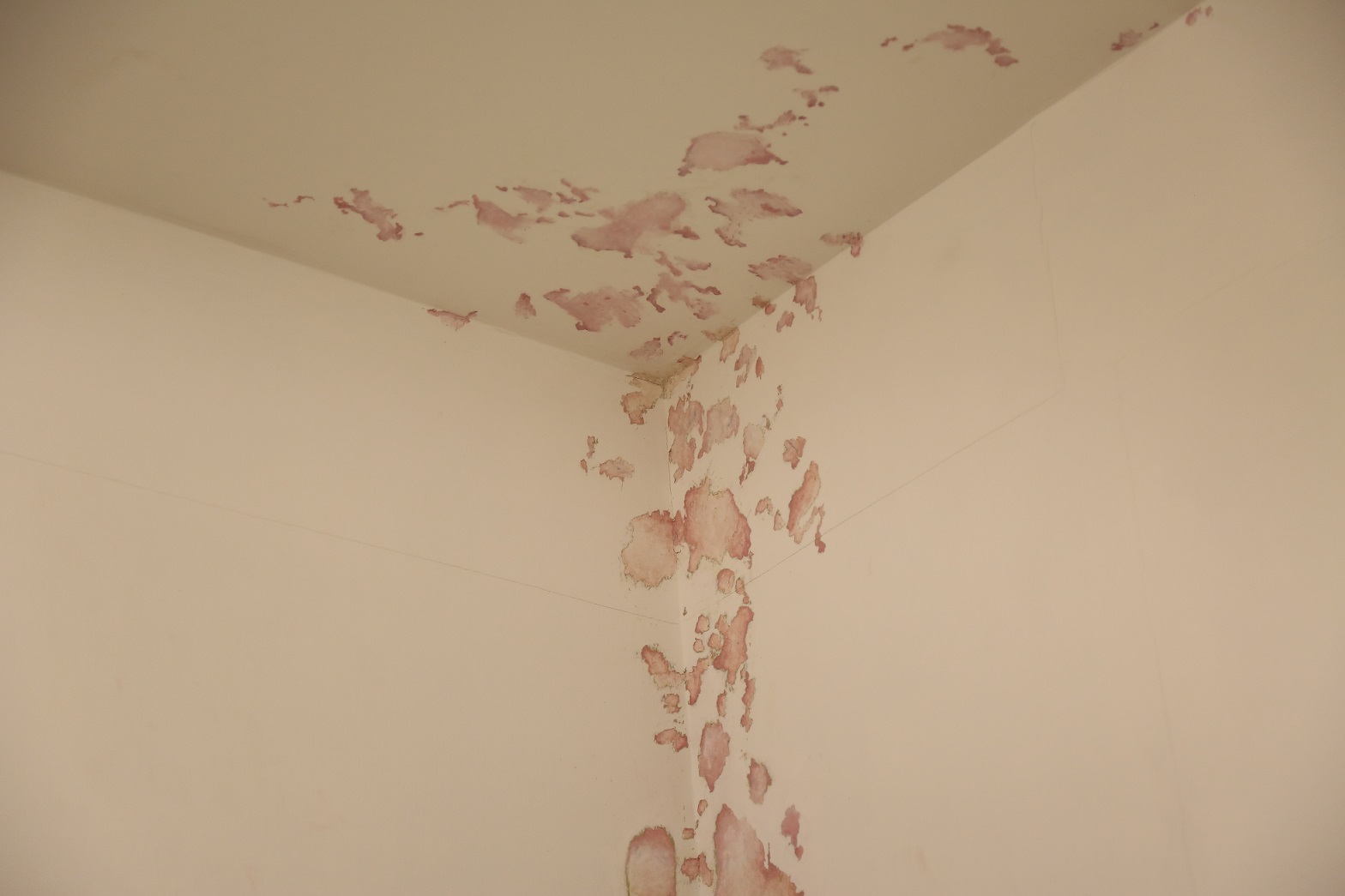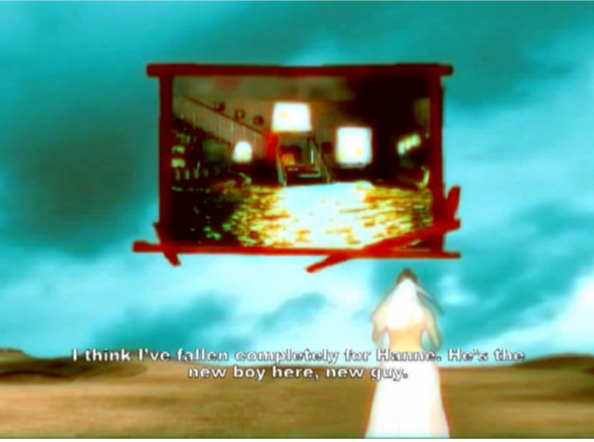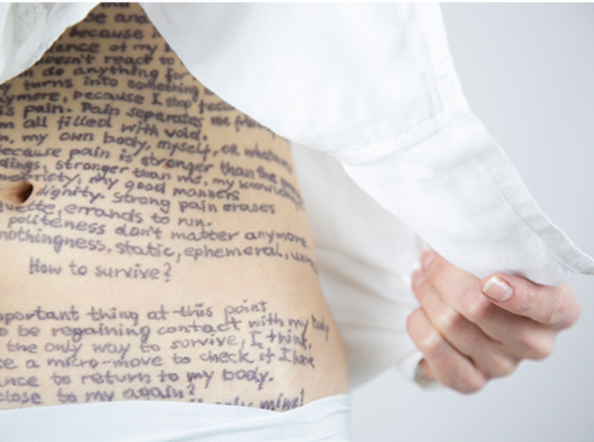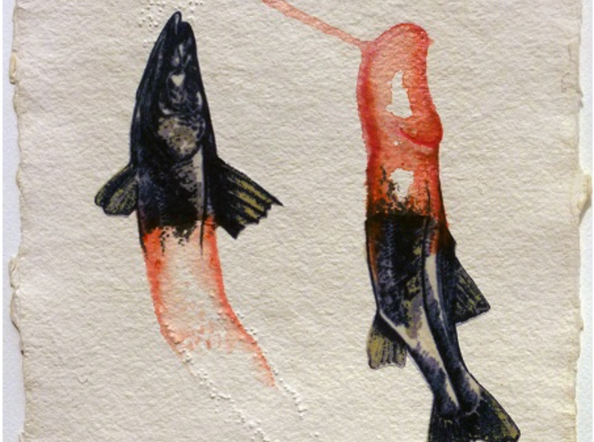-
Exhibitions
- Prameya Art Foundation Presents: Caressing History curated by Adwait Singh |
Group Show
- — Neerja Kothari
- — Ariana Page Russell
- — Jacolby Satterwhite
- — Khushbu Patel
- — Malgorzata Dawidek
- — Mariam Ghani
- — Mithu Sen
- — Iwona Demko
- — Eva Magyarosi
- — Ester Fleckner
- — Chitra Ganesh
- — Shailesh BR
- — Sunil Gupta
- — Vidha Saumya
-
![… That Small Chasers]() … That Small Chasers
… That Small Chasers
-
![Deforming into Thorns]() Deforming into Thorns
Deforming into Thorns
-
![Cactus – II]() Cactus – II
Cactus – II
-
![Nursing this Wound]() Nursing this Wound
Nursing this Wound
-
![Untitled – 8 – Sun City]() Untitled – 8 – Sun City
Untitled – 8 – Sun City
-
![Untitled – 11 – Sun City]() Untitled – 11 – Sun City
Untitled – 11 – Sun City
-
![Untitled – 7 – Sun City]() Untitled – 7 – Sun City
Untitled – 7 – Sun City
-
![I would still Commit the Original Sin 1]() I would still Commit the Original Sin 1
I would still Commit the Original Sin 1
-
![I would still Commit the Original Sin 2]() I would still Commit the Original Sin 2
I would still Commit the Original Sin 2
-
![I would still Commit the Original Sin 3]() I would still Commit the Original Sin 3
I would still Commit the Original Sin 3
-
![I would still Commit the Original Sin 4]() I would still Commit the Original Sin 4
I would still Commit the Original Sin 4
-
![I would still Commit the Original Sin 5]() I would still Commit the Original Sin 5
I would still Commit the Original Sin 5
-
![I would still Commit the Original Sin 6]() I would still Commit the Original Sin 6
I would still Commit the Original Sin 6
-
![I would still Commit the Original Sin 7]() I would still Commit the Original Sin 7
I would still Commit the Original Sin 7
-
![I would still Commit the Original Sin 8]() I would still Commit the Original Sin 8
I would still Commit the Original Sin 8
-
![I would still Commit the Original Sin 9]() I would still Commit the Original Sin 9
I would still Commit the Original Sin 9
-
![I would still Commit the Original Sin 10]() I would still Commit the Original Sin 10
I would still Commit the Original Sin 10
-
![I would still Commit the Original Sin 11]() I would still Commit the Original Sin 11
I would still Commit the Original Sin 11
-
![I would still Commit the Original Sin 12]() I would still Commit the Original Sin 12
I would still Commit the Original Sin 12
-
![I would still Commit the Original Sin 13]() I would still Commit the Original Sin 13
I would still Commit the Original Sin 13
-
![I would still Commit the Original Sin 14]() I would still Commit the Original Sin 14
I would still Commit the Original Sin 14
-
![I would still Commit the Original Sin 15]() I would still Commit the Original Sin 15
I would still Commit the Original Sin 15
-
![The Glass House Movies]() The Glass House Movies
The Glass House Movies
-
![A Wheel of Emotion, from the Repository Series]() A Wheel of Emotion, from the Repository Series
A Wheel of Emotion, from the Repository Series
-
![Page No. 00, from the Body Texts Series]() Page No. 00, from the Body Texts Series
Page No. 00, from the Body Texts Series
-
![Page No. 01, from the Body Texts Series]() Page No. 01, from the Body Texts Series
Page No. 01, from the Body Texts Series
-
![Page No. 04, from the Body Texts Series]() Page No. 04, from the Body Texts Series
Page No. 04, from the Body Texts Series
-
![Page No. 05, from the Body Texts Series]() Page No. 05, from the Body Texts Series
Page No. 05, from the Body Texts Series
-
![Page No. 09, from the Body Texts Series]() Page No. 09, from the Body Texts Series
Page No. 09, from the Body Texts Series
-
![Burning Delight]() Burning Delight
Burning Delight
-
![Failure of Unplanned]() Failure of Unplanned
Failure of Unplanned
-
![Blessed Avenue]() Blessed Avenue
Blessed Avenue
-
![A Month of a Woman’s Face]() A Month of a Woman’s Face
A Month of a Woman’s Face
-
![A Month of a Woman’s Face]() A Month of a Woman’s Face
A Month of a Woman’s Face
-
![A Month of a Woman’s Face]() A Month of a Woman’s Face
A Month of a Woman’s Face
-
![A Month of a Woman’s Face]() A Month of a Woman’s Face
A Month of a Woman’s Face
-
![A Month of a Woman’s Face]() A Month of a Woman’s Face
A Month of a Woman’s Face
-
![Hanne]() Hanne
Hanne
-
![Arguments for Desire (Bone/error/nude) 4]() Arguments for Desire (Bone/error/nude) 4
Arguments for Desire (Bone/error/nude) 4
-
![Arguments for Desire (Bone/error/nude) 5]() Arguments for Desire (Bone/error/nude) 5
Arguments for Desire (Bone/error/nude) 5
-
![Arguments for Desire (Bone/error/nude) 2]() Arguments for Desire (Bone/error/nude) 2
Arguments for Desire (Bone/error/nude) 2
-
![Arguments for Desire (Bone/error/nude) 1]() Arguments for Desire (Bone/error/nude) 1
Arguments for Desire (Bone/error/nude) 1
-
![Arguments for Desire (Bone/error/nude) 3]() Arguments for Desire (Bone/error/nude) 3
Arguments for Desire (Bone/error/nude) 3
-
![Prison of Childhood]() Prison of Childhood
Prison of Childhood
-
![Comfort with her Precipice]() Comfort with her Precipice
Comfort with her Precipice
-
![Still Awaiting her Time]() Still Awaiting her Time
Still Awaiting her Time
-
![Cactus – I]() Cactus – I
Cactus – I
-
![Index]() Index
Index
-
![!!!!!]() !!!!!
!!!!!
-
![…is…]() …is…
…is…
-
![Belle Etoile]() Belle Etoile
Belle Etoile
-
![Flora]() Flora
Flora
-
![Herringbone]() Herringbone
Herringbone
-
![Patterns Faction]() Patterns Faction
Patterns Faction
-
![Ruffle]() Ruffle
Ruffle
-
![Flora (Kneel)]() Flora (Kneel)
Flora (Kneel)
-
![V]() V
V
-
![Trepid Traces (6750)]() Trepid Traces (6750)
Trepid Traces (6750)
Caressing History: Draft for a body-based historiography
‘Caressing History’ investigates the possibility of a sensuously queer historiography that espouses a synesthetic and tactile relationship with the past as an alternate todisciplinaryand objective approaches to documenting history, based on Elizabeth Freeman’s notion of “erotohistoriography” as one fully encompassed by “bodies and their pleasures” . Reviving a Burkean affective historicism that advocates an empathetic link to the bygone as the proper mode of apprehending it, the exhibition attempts to reinstate the body and its phenomenology into historicism as a way of illuminating certain episodes, experiences and ephemera that get systematically side-lined by mainstream historicalaccounts and methods configured to maintaining the dominant temporal rhythms and status quo.
The chief “dispositif” of the age seeks to organise bodies, families, societies, and nations into efficient units by controlling their shared timingand situating their dispositions and customs as incontrovertible “natural” truths outside of time itself. Those that are discounted/ disadvantaged by this “chronobiopolitics” cannot help but feel the favoured repronormative and heterosexual imperatives as cumbersome. Even those that inhabit privileged positions are liable to feel thwarted from time to time, as their fluvial desires and drives come up against the rigours and regimens of a puritanically teleological and compartmentalising system. ‘Caressing History’ attempts to gather these dissonances, moments of derealisation, feelings of injustice,shame, anachronism and intempestivity that strain and rupture the fabric of progressivenational history, into a “para-historiography” or what Caroline Dinshaw has called, “a postdisenchanted temporal perspective” that does not hold teleology or productivity as hallmarks of the historical. In other words, by foregrounding asynchronies and non-sequential temporalities such as those launched by love, unconsciousness, afterlife, daydreaming, haunting, reminiscing, fantasising, mourning, ‘Caressing History’ gives the lie to the historical diuturnity, allowing for the possibility of “collapsing time through affective contact between marginalised people now and then.
” Extrapolating the example of the eponymous zombie from Mary Shelley’s celebrated novel Frankenstein, Freeman posits that the monster’s body by virtue of being an assemblage of mismatched (dead) body partscorresponding to different times, forms a communicative channel between the past and the present and as such can be conceptualised as the site where history is felt, processed and conjured. If one takes “monstrous” to be the definition of a poorly-socialised, hybrid body that fails to square with the normative codes of belonging, the subalternis encountered as the (dis)affectedand potentially denaturisingmonstrous forceat the cross-roads of time (not unlike the three witches encountered on the heath by Macbeth).Their very heterogeneity, temporal asynchrony andoverall failure to synch to the state-sponsored chronometricsallow them to perceive the fault-lines of the capital’s clock-time and the excess that it generates; bestowing them with a certain agency to manipulateit. In conformity toDerridean relational ethics, ‘Caressing History’stakes a claim on behalf of the marginal by situating the historical, as Christopher Nealon puts it,“along the seam of its becoming-historical;” installing a dialogical tension at the seat of any historical enquiry that claims to be ethical or representative; and encouraging one to read history against its grain.
In a sense, a body-based historiography is neither strictly historical nor verbal/ linguistic. In fact, it can be decidedly ahistorical or even anti-historical, favouring instead a bodily“repertoire” – a term that Diana Taylor uses to denote “a non-archival system of transfer” in a move away from the Western logocentrism . Unlike the archive that actively seeks to dissociate and distil historical knowledge from its corporeal source into enduring material such as texts or artefacts, the repertoire underlines the proximity and presence of bodies in effectuating that transfer.Thus objectivity, is not a currency that the repertoire traffics in, instead valuing what the body and its phenomenology can bring to the exchange. The centrality of body to the repertoire is what makes it an ideal medium for ephemeral and otherwise non-reproducible knowledge such as oral accounts and performances (understood in an expanded sense). A body-based historiography aims to situate historyoutside of textuality, leavening it with non-causal, non-canonical, non-national, affective and even mythic modes of consciousness,heralding a shift “from written to embodied culture, from the discursive to the performatic” . It poses a challenge to the extant epistemological paradigms that hold the written as the guardian, guarantor and purveyor of knowledge and historicity; drawing our attention to the discreditedpile of temporal experiences, embodied practices, and anticanonical knowledges.
Somato-historiography acknowledges the inextricable entanglement of corporeal sensations and historical consciousness. In fact,most psychoanalytical traditions recognise the body as an important site for encountering and reorganising the past such as the Freudian scheme of “deferred action” where the body unconsciously reenacts an undigested past, in the form of a displaced, hysterical gesture. Similarly, queer melancholia theories such as those postulatedby Judith Butler and Jack Halberstam, following on from Freud, posit wounds and scars to be the violent foundations for the bodily imago and the ego itself, fulfilling a morphologisingfucntion; and in Marxian accounts history appears to be something that hurts, trauma being its organising principle. Furthermore, Freeman attempts to supplement this limited view of historicist recall with positive affects such as idylls, utopias, longing, and memories of touch; favouring instead an erotic dalliance with the past (rather than a merely verbal or narrative relationship) encompassing emotional responses, physical sensations and non-genealogical affiliations precipitated by practices such as drag performance, sexual “bottoming” and sadomasochism . Body, being intrinsic to some of these practices of dredging up, animating and re-membering the past provides a historical method of rewriting it into the present through the quill of desire;emerging not only as the primary site for recalling, rehearsing andreplicatinghistories andrenewing socio-cultural contacts but also, and more importantly, as the site for unbinding the ‘habitus’ .
Having established the grounds for a somato-historiography, we will now explore further some of the ways in which the body can inflect historicist enquiry and the forms that this embodied history could assume, before turning our attention to the artworks from the show. Jay Prosser in his essay “Skin Memories” points to a literal sense in which the exo-somatic surface of our bodies perform a memorialising function:
Skin remembers, both literally in its material surface and metaphorically in resignifying on this surface, not only race, sex and age, but the quite detailed specificities of life histories. In its colour, texture, accumulated marks and blemishes, it remembers something of our class, labour/ leisure activities, even (in the use of cosmetic surgery and/ or skincare products) our most intimate psychic relation to our bodies.
Our skin is a vast register and theatre for history, be it in the biographical traces chronicling personal memoirs, or certain overt signs priming the body for classist, racist and gendered readings, orphysical manifestations of a troubled psyche in the form of psoriasis, or the telepathic transference in the form of stigmata, or the more transient effects such as love bites and blushes. Drawing upon autobiographical accounts of transsexuality, Prosser in his trailblazing Second Skinsre-contextualises sex-reassignment surgery as a corrective intervention undertaken by the gender-dysphoric subject to realise the memory of a body remembered differently. Similarly, drawing upon Alison Landberg’s notion of prosthetic memory, Freeman conceives of the dildo as a phantasmicway for the butch lesbian to extend herself into “a masculine past, the imagined time of another life.” Further, she theorisessado-masochism as a “finely honederotohistoriographical instrument” for viscerally encountering “history – personal pasts, collective suffering, and quotidian forms of injustice – in an idiom of pleasure” . Tim Dean, writing in the context of gay subcultural practice of “bare-backing,” puts forward the notion of “unlimited intimacy” whereby certain gay men, through intimate sexual encounters and fluid exchange, are able to establish non-genealogical contact with generations of queer people that came before them, inhabiting historical moments that occasion much nostalgia and displacement in the present . Gender and queer theorists such as Elizabeth Freeman, Heather Love and Judith Butler among others, have also theorised drag performance as historicist in its loving curation and re-activation of outmoded tropes, styles and gendered performances.
Artists such as Ariana Page Russell and MalgorzataDawidek draft their skin as screens/ tablets for inscribing personal memoirs.Dawidek’sBody Text seriesemploys what she refers to as “bodygraphy” – a dialectical chirographical practice that shapes the body in the process of shaping itself after it, occupying the space between body language, body as a medium for language and body as its subject. Bodygraphy, thus inaugurates a double consciousness where the acting body proceeds from the awareness of simultaneously being a screen for socio-cultural inscriptions as well as an object of judgment, appraisal, critique and gossip. Since 2010, the artist has taken to this evocative mode of scribing and translating the welter of sensations and observations of the everyday life filtered through the lens of an ailing body, projecting it back on to the source that serves as the medium for the illness, the affects that if gives rise to, as well as the language that struggles to capture that affect. In a similar vein, The Wheel of Emotions attempts to map out the inconsistencies and incongruities that become apparent when one sets to translate emotions across languages. Some languages have evolved multiple cognates for a base emotion whereas certain emotions altogether fail to signify in a particular language. Ariana Page Russell claims the transparency of her hypersensitive skin by externalising the various neurochemical reactions catalysing underneath its surface through the ruddy hues of her personalised “skin tome”. Like Mimosa leaves that retract when touched, her dermatographic skin releases excess immunological neurotransmitter histamine that causes an inflammatory reaction, blooming up as a welt on the skin and leaving a transient trailin places it is scratched. Russell’s photographs literalise the archival impulse of the skin, offering it up as a record of passing time, and a repository for personal history. In a manner somewhat similar to Dawidek, Neerja Kothari devices painstakingly elaborate, if futile, cathartic exercises to process certain extreme somatic experiences. Her laborious methodology mimics the metronomic exercises undertaken at the physical rehabilitation centre in Kolkata where she had to train herself to re-learn and re-member basic muscle movements and motor functions that her brain forgot. Works like Trepid Traces then manage to convey some of this trepidation and uncertainty, proceeding with a faltering hesitation that is nonetheless determined to go on, tracing a gesture on paper with graphite powder before settling down to the absurd assignment of quantifying every speck of graphite;disaggregatingthe monolithic corpus of memory, history and knowledge itself into infinitesimal constituents for all to see.
IwonaDemko’sMonth of a Woman’s Face envisions an alternate calendar calibrated in units of used make-up removal pads, one for each day of the month, as a playful microtemporal appropriation of received chronometrics through a feminine idiom. By drawing attention to the pervasiveness of the phenomenon of make-up that has come to occupy a vast chunk of the female experience with the tightening strictures of public appearance and self-presentation, Demko highlights the obvious,and yet easily forgotten fact that the lived experience and calculation of time varies across bodies. Even for the same person, time seems to flow differently from interval to interval, compressing and elongating, ebbing and rushing. Demko’s work cultivates attention to these vagaries, interstices and durations, therein qualifying a unified and linear account of history.Likewise, VidhaSaumya’sNursing This Wound inaugurates what Julia Kristeva has called a “women’s time” by presenting a window onto a Sapphic sorority rooted in female morphology and experiences.Kristeva reaffirmsthe recriminating female biology that is so often cited as the root cause for their enslavement in a phallocentric society, where the cyclical and timeless conceptions of female biology and subjectivity are seen to be contrapuntal to theuni-directionality of patriarchal conceptualisations of time:
[T]here are cycles, gestations, the eternal recurrence of a biological rhythm which confirms to that of nature and imposes a temporality whose stereotyping may shock, but whose regularity and unison with what is experienced as extrasubjective time, cosmic time, occasions vertiginous visions and unnameable jouissance.
Nursing This Wound, as the title suggests, describes the temporality of collective healing and shared vulnerability, qualifying the notion of hurt as subjectivating and morphologising with positive affects such as therapy, warmth, care, and the erotics of touch. Ester Fleckner’sArguments for Desire reclaims a space for non-geneological and queer exchange of desires by formulating an abstract colloquy between anuses across time in the manner of certain queer theorists such as Leo Bersani and Tim Dean. The anus, represented in the work using the asterisk symbol, is a densely packed semiotic site. Bersani in his provocative essay “Is the Rectum a Grave?” for instance, attempts to decouple the queer quest for pleasure from the pastoralising accounts that equate promiscuity with infection, by exposing the state-sponsored propaganda about AIDS as stemming from a threat of multiple orgasms and insatiable (female) sexualitydisplaced on to the anus which should instead be celebrated as a site for sublimation and reorganisation of subjectivities . As a glyph thatcan variously denote censoring, annotation, replication, or multiplication, the asterisk or the star reinvented as an alphabet for the anus, is enlisted by Flecknerto constellate a poetics that speaks, modulates, and inflects as the body (as opposed to the language that organises and corrals it).
The works by Mariam Ghani, Sunil Gupta and JacolbySatterwhiteextrapolate archival material in productively ahistorical ways in order to divine imaginative modes of time travel in a quest for historical closure or queer futurity. Mariam Ghani’s Glass House Home Movies transposes the second-hand memory of the two civil wars that tore her parent’s nations, i.e. Lebanon and Afghanistan, into the domestic space of her studio in Brooklyn New York. Here, the artist’s body serves as a communicative channel for invoking a traumatised past in its compulsive re-enactments of an embattled domesticity, something that must have left an invisible imprint on the artist growing up. The segmented and nonsequential time of the video that collages documentary footage, media reportage, commercials, as well as the staged reenactments for the surveillance camera installed in her apartment, dislocates the progressivetime of national history, crystallisinganachronisms and inaugurating hauntologies that can illuminate the present. JacolbySatterwhite’sBlessed Avenueis a final send-off to the memory of his late mother Patricia Satterwhite, borrowing elements from her rich repertoire of song lyrics and distinctively latticed and cross-hatched drawings of utilitarian objects that are rendered into the kitschypsychedelic settings of the work’s libidinised universe, using an animation software.Blessed Avenue’s topsy-turvy world is populated by small groups of bodies engaged in sadomasochistic and orgiastic rituals, gyrating to the tune of acid-pop, mixed with Patricia’s acapella recordings. In addition to being an homage to the memory of a black working-class mother as well as a reparative gesture towards the wider raced history of systematic social and economic discriminations, Satterwhite uses this inherited legacy to strike non-geneological roots, in order to retroactively carve out a mythology for queer experiences, so often discounted and subject to erasures in official histories. Sunil Gupta’s Sun City accomplishes a surreal temporal remixing of material indexical to disparate moments in time, brought to reflect on the present social condition where certain bodies are still deterred from coming into their own, or expressing their loves and desires more openly for fear of violence or judgement . The series of staged photographs exhibit a circularity of narrative and a prognostics specific to Chris Marker’s science-fictional, post-apocalyptic featurette, La Jetée (1962) from which Gupta’s Sun City is inspired. Marker’s protagonist, Davos Hanish, a state prisoner in Paris, is subjected to time-travelling experiments where returning to the past he ultimately realises that he had witnessed his own impending death in the future that is in fact, now. The Parisian setting of the antecedent is retained in Gupta’s photographs, whilst the post-holocaust scenario is replaced with the time of the AIDS crisis, such that Gupta’s protagonist appears to be caught in the cycle between a libertine lifestyle given to cruising and anonymous sexual encounters in bath houses and saunas, and the hymeneal rhythms of domesticity and public displays of affection. Further, in referring the postures and arrangements of bodies in his tableaux to the homoerotic photographs of the German, Wilhelm von Gloeden (1856 – 1931) celebrated for his Arcadian nudes of Sicilian boys and the American, George Platt Lynes (1907 – 1955) remembered for his portraits of notable queer celebrities of the time, Gupta traffics in, what Christopher Nealon calls the “historical emotion” as naming both the “earlier dreams of belonging to ‘History’ and the feeling a latter day queer subject might have reading the archive of those dreams.”
ÉvaMagyarósi’s video Hanneplunges us into a dreamy diaristic account of that most disorienting of events – love, and the helpless quest to escape from the sense of the lover that ensues, right from the first declaration, “I think I have fallen completely for Hanne. He’s the new boy here.” The capacity of love to confound temporalities has often been noted by philosophers and poets. Alain Badiou for instance speaks of love’s “two-scene” or the ability to construct the world from a decentred point of view attendant upon the entanglement with the other, as a “really radical event at a micro-level”, “a desire for an unknown duration”, and “a new way of experiencing time” . Hanne rewires our senses for the reception of non-conventional historical material and methods, sensitising us towards the existence of parallel temporalities and their occlusion from the official clock-time, forcing us to re-evaluate what we consider important, and hence worth saving or documenting. Working in a similarly diaristic mode, Khushbu Patel highlights certain ineffable experiences in a young girl’s life such as memories of touch, attractions, rejections,detachment, menstruation, emotional turbulence, feelings of immanence etc. that golargely unremarked and uncatalogued,filling up the interstitial spaces in her consciousness, to be recollected during unguarded moments of pleasure, idle musings, encounters, and dreams. The pages of this diary presents an alternate history of sexuality, conveying the inestimable duration of
growing-up interspersed with strange occurrences and rites of passage.Patel’s wider practice is concerned with thereceived notionsabout what constitutes as beautiful, desirable, or appropriate at a given time and employs the lens of abjection to interrogatecultural norms that regulate our belonging and bearing in society, revealing substantial hidden costs in terms of physical and psychological attrition.By magnifying the imperfections of our skins, the artist bursts the bubble on the “beauty myth” and our increased obsession with smooth surfaces, forcing the viewers to confront their uneasinessabout the striatedand fears about social and romantic rejection.
Finally, works by Mithu Sen, Chitra Ganesh, and BR Shaileshexamine a special body of artworks that appear to overflow with the “personal” in the escaped instances of intensely private, unsettling, and intempestive utterances that appear to float disjunctively within the visual economies of these works. How do these stray textual utterances, increasingly present in contemporary art in the form of titles, modernist poetry, non-diegetic annotations, diary entries, notes, remarks, excursuses, and ephemera unsettle/replot the meaning of the artwork? How do these situate the viewer with respect to their contents, and trouble her criticality? These are some possible line of enquiries that these works indicate.Mithu Sen’s I Will Still Commit the Original Sin is a series of drawings that unpack what the artist calls “untaboo sexuality” to delineate a free space that alleviates sexuality from its historical heaviness, moral judgements, cultural stigma and social mores, allowing for alternative engagement and permutations. As a Lilithian disavowal of authority, summed up in the works’ title, I Will Still Commit the Original Sinpreserves the unqualified fluidity and inventiveness characterising sexuality that eludes all efforts at corralling and pigeonholing. As a visual alphabet of repressed impulses, overdrives, non-normative behaviour and subversive role-play, the work can be read as a sort of an écriturefeminine. Employing, what the art writer Beth Citron has called “textured humour” to conbobulate acomposite super-sensuality, manifested in the form of features such as multiplied breasts and phalli, explosive orgasms and founts of bodily fluids, bodies with heightened permeability, and morphed physiologies enabling access to pleasures heretofore unknown, Sen’s works champions vulnerable masculinities, hybridity, and becoming triggered by jouissance. Like Sen, Chitra Ganesh’s visual grammar makes use of free association, combining elements from the Indian popular comics Amar Chitra Katha with Manga, graffiti and pop art, in a surreal mash-up of religious and science fictional iconographies. Stemming from the consciousness of how mainstream meta-narratives shore-up certain racialised profiles and subjectivities, intensifying and demonising their difference, Ganesh’s works offers an undertow by siding with the subaltern; salvaging marginal characters, extrapolating narrative cul-de-sacs, indexing and fabulating their missing histories. Thus, likeSatterwhite, Ganesh calls upon the mythopoetic power of science-fiction and utopian thinking to avail anchorage to underrepresented or dismissed subjectivities, expounded by scholars such as Frederick Jameson and José Esteban Muñoz. The symbology of gashes, eyes, vaginas, and flowers is largely metonymic and transferable, not unlike the metaphor of the eye which doubles up as the egg and the bovine testicles before returning to its original ocular referent in Georges Bataille’s perverted psycho-sexual novella Story of the Eye (1928).BR Shailesh’sKama Muta refers to the Sanskrit term that communicates the viscerality of emotions and the feeling of being moved by them. The vibrant vegetal matter in his work functions as a transferred epithet for aroused excitement, not unlike the AshtaNayika or the eight heroines each symbolisingan archetypical romantic statein the Natya Shastra . By displacing human emotions on to the more-than-human, Shailesh brings to cognisance the expanded sphere of sexuality and the imperceptible interarticulations of our sociality with the surroundings. As in Sen’s practice, the textual annotations and discursus in his work playfully counter the hierarchies and exclusions instituted by language and the normative inductive logic that fails to account for all probabilities, with an “illogic” and a quirky argot all his own.
-Adwait Singh
Freeman, Elizabeth (2010).Time Binds: Queer Temporalities, Queer Histories. Durham and London: Duke University Press.
To use Michele Foucault’s term that signifies the various institutional , discursive and administrative structures put in place for the purpose of controlling the social body.
Dinshaw, C., Edelman, L., Ferguson, R., Freccero, C., Freeman, E., Halberstam, J., Jagose, A., Nealon, C., Nguyen, H. (2007). Theorizing Queer Temporalities: A Roundtable Discussion. GLQ: a journal of lesbian and gay studies, 13(2-3), 177-195, p. 185.
Ibid., p. 178.
Ibid., p. 189.
Taylor, Diana (2003). The Archive and the Repertoire: Performing Cultural Memory in the Americas. Durham and London: Duke University Press.
Ibid., p.16.
Freeman, Elizabeth (2010). Time Binds: Queer Temporalities, Queer Histories. Durham and London: Duke University Press.
Pierre Bourdieu’s term for a set of embodied dispositions that determine the dominant perception of and reactions to the socio-cultural reality.
Prosser, Jay (2001). Skin Memories. In Sara Ahmed and Jackie Stacey(eds.)Thinking Through the Skin. London and New York: Routledge, p. 52.
Freeman, Elizabeth (2010). Time Binds: Queer Temporalities, Queer Histories. Durham and London: Duke University Press, p. 161.
Ibid., p. 137.
Dean, Tim (2009). Unlimited Intimacy: Reflections on the Subculture of Barebacking. University of Chicago Press.
Kristeva, Julia (Autumn, 1981). Women’s Time. In Alice Jardine and Harry Blake (trans.)Signs, Vol. 7, No. 1. Published by: The University of Chicago Press, 13-35 (p. 16).
Bersani, Leo (Winter, 1987). Is the Rectum a Grave. InOctober, Vol. 43, AIDS: Cultural Analysis/Cultural Activism. Mit Press, 197- 222.
Incidentally, the work was censored and taken down during its previous showing in Delhi in 2012 due to purported complaints about nudity, and objectionable depictions of certain homosocial encounters.
Dinshaw, C., Edelman, L., Ferguson, R., Freccero, C., Freeman, E., Halberstam, J., Jagose, A., Nealon, C., Nguyen, H. (2007). Theorizing Queer Temporalities: A Roundtable Discussion. GLQ: a journal of lesbian and gay studies, 13(2-3), 177-195, p. 189.
Badiou, Alain with Nicolas Truong (2009). In Praise of Love, Peter Bush (trans.). Paris: Flammarian SA.
The classical Sanskrit treatise on performing arts.
